JCF and Federation set to join forces as a single organization
SHANNON LEVITT | MANAGING EDITOR
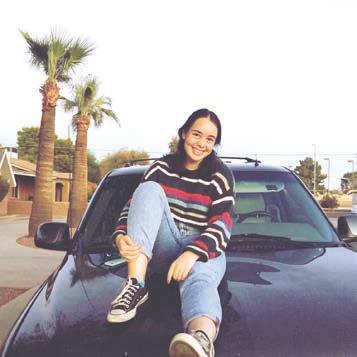
Two key Jewish organizations in Greater Phoenix are set to join forces in order to increase their impact to the benefit of the community.

On March 18, the boards of the Jewish Community Foundation of Greater Phoenix and the Jewish Federation of Greater Phoenix announced a unanimous vote to become “a single operating entity.”


While that new entity is yet to be named, it will retain the missions of both existing organizations: community philanthropy and support.
The Foundation assists donors to plan and establish funds for legacy giving. The Federation raises donations for the benefit of Jewish organizations in the community. By combining resources and having a single leadership team, they can do more with less. And while the resources will now grow under one roof, the funds of each organization will continue to be legally segregated.
More than a year ago, Federation and Foundation leadership formed a task force with key community players to investigate the efficacy of integrating the organizations. Jonathan Hoffer, chair of the task force, was an officer on both boards when the process began and brought a unique perspective to the vetting process.
While the two organizations have different business models, Hoffer said, those models are very complementary and it makes sense to bring them together.
“The whole concept is that one plus one equals three,” he said. “Together they can better serve and effectively strengthen the community.”
Hoffer pointed out that an enormous amount of time and energy is spent by both organizations on financial
B’nai mitzvah find ways to ‘squeeze meaning’ out of Zoom celebrations

Liza Golden knows how to throw a party. She threw a bash for about 130 people for her daughter’s bat mitzvah in 2014 and again for her son’s bar mitzvah in 2017.

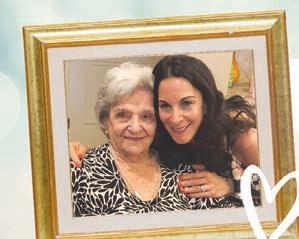
But there would be no party for her youngest son, Nadav, after his bar mitzvah last August. The COVID-19 pandemic’s social distancing requirements wouldn’t allow it. “We decided to have a Zoom bar mitzvah,” she said. “What happened was a much better — beyond-our-dreams — experience.”
The pandemic has changed the look and feel of b’nai mitzvah, and several area rabbis say the rite of passage has become even more meaningful to families and kids because of the changes.
Up until now, certain aspects of a bar or bat mitzvah have been pretty standard, said Rabbi Mendy Deitsch of Chabad of the East Valley.
“You get up, you say a certain amount of passages and a speech — but not every kid wants to have a bar or bat mitzvah like that,” he said.
The pandemic’s forced isolation and use of technology has created the flexibility for kids to connect with their ceremony in new ways. Some kids want to sing or read a poem, for example, and now they feel empowered to “celebrate the moment” however it feels most authentic to
Reflecting on a year of loss
Anti-Semitic graffiti
on synagogue, JCC in Belarus Flying under the radar: The women warriors of Israel’s elite combat intelligence unit ESPN
describes Israel’s impact on her career NATIONAL INTERNATIONAL SEE MITZVAH, PAGE 3
spray-painted
host/basketball star Rosalyn Gold-Onwude
Amendola shares the story of her mother’s losing battle to COVID-19 to remind people what's at stake. To read more, go to p. 10.
Jodi
SEE INTEGRATION, PAGE 2 ISRAEL SPECIAL SECTION | 12 PASSOVER Savory brunch recipes MARCH 26, 2021 | NISAN 13, 5781 | VOLUME 73, NUMBER 15 $1.50 HEADLINES | 5 MISSING PROM Local teens talk pandemic
PHOTO BY JENNIFER STARRETT
NICOLE RAZ | STAFF WRITER
operations. By combining the two under one roof, staff will be freed up to focus on other worthwhile areas.
The integration was never about trying to save money or reduce staff, Hoffer emphasized. “It’s all about increasing the impact.”
One aspiration of the new entity will be to reach out to and include people in the community who identify as Jewish but aren’t engaged with any official Jewish organization, synagogue or service. According to Arizona State University’s 2019 population study, that could be as many as 80% of Jews in the Phoenix area.

The study also can give critical guidance in determining what exactly Jews in Greater Phoenix want from their Jewish community.
“This is an opportunity for us to respond to that in really thoughtful ways,” said Richard Kasper, JCF’s CEO. A first step would be to ensure the new organization “reflects the needs and interests of those people in meaningful ways — not just pay lip service,” he said.
The Jewish community represents a more diverse landscape today than in the past and among other things includes more samesex parents, interfaith families and Jews of color. This evolution is something the new organization will have to reckon with. “The question is, how do you build a community for the future that may be different than the community that we have,” Kasper said.
The answer is to get out and talk to the Jewish public to let people know this will be an organization that is welcoming and representative, he said.
Those involved in the integration of the Federation and Foundation have looked to other cities that have gone forward with a similar process, like Memphis, Tennessee and Columbus, Ohio. Learning from those cities is helpful, Kasper said. He’ll know
Greater Phoenix has succeeded when other cities contact him in the future and say, “We want to be like you.”
Marty Haberer, the Federation’s president and CEO, said the integration will allow “a much healthier and a much fuller menu for the Jewish community.”
Haberer brings some personal experience to the project, too, from his time at the Jewish Federation of Sarasota-Manatee in Florida, where he was associate executive director before moving here six years ago.
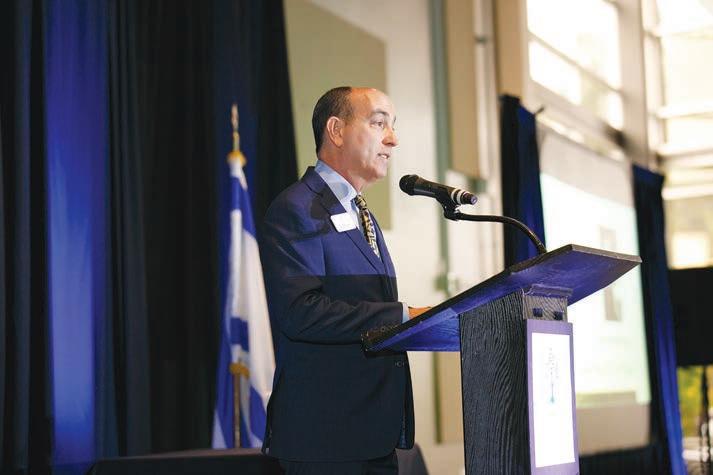
There was a similar joining of Sarasota’s Federation and Foundation during his tenure there. “So I already had that vision when I came here (to Phoenix).”
Haberer is optimistic that the integration will bring many benefits to the community.
He’s already seen the good that “can happen when you can actually bring all the resources — human resources, financial resources — all those things towards one laser-focused goal,” he said.
Over the years, Haberer said, “you get caught up in chasing your campaigns and dealing with the people that you deal with every year,” he said. “But there’s a whole lot
of people out there that don’t know us and that we haven’t really engaged — a diverse Jewish community out there that we have not touched.”
Kasper, too, is optimistic. “I don’t think anybody who commits to doing this kind of work can do it successfully if they aren’t an optimist,” he said. Overall, he’s confident that things are going in the right direction.
Hoffer thinks there’s little downside to the move. He simply hopes that the community rallies around the idea. One positive sign already is that both boards voted unanimously to move forward.
“That shows they felt we did this process the right way,” Hoffer said.
“This is really a tremendous opportunity for all of us who are involved in it (the integration) to look closely at what we do and how we do it and throw away the stuff that’s not working, and build something better,” Kasper said.
Kasper will be interim CEO during the new entity’s formation process, with the intention that he will be CEO once things are finalized as well.
“I feel really excited to be a part of something that’s going to be fresh and that’s going to create the best environment for our families, ourselves and our vibrant community,” Haberer said.
Haberer will become executive vice president for donor services for the new entity. “It’s not about me or any individual,” he said about his new position. “It’s not about titles. I want to do fulfilling work and to be as useful and as helpful and as passionate as I can be.”
During the interim period, a new board of directors of up to 19 members will be seated. The plan is to have six current members from each of the two boards and three to seven at-large members representing donors and the community. JN
2021
Phoenix Jewish News
Print Dates
January 8
January 22
February 5
February 19
March 5
March 12
March 19
March 26
April 2
April 16
May 7
May 21
June 4
July 9
August 6*
August 20
August 27
September 3
September 10
September 24
October 1
October 15**
November 5
November 19
December 3
December 17
*Best of Magazine
Directory
PUBLISHER Jewish Community Foundation of Greater Phoenix

GENERAL MANAGER Rich Solomon | 602.639.5861 rsolomon@jewishaz.com


MANAGING EDITOR Shannon Levitt | 602.639.5855 slevitt@jewishaz.com
STAFF WRITER Nikki Raz | 602.872.9470 nraz@jewishaz.com
ADVERTISING SALES CONSULTANT

Jodi Lipson | 602.639.5866 jlipson@jewishaz.com
SUBSCRIPTIONS 602.870.9470 x 1 subscriptions@jewishaz.com
GRAPHIC DESIGNER Frank Wagner | 410.902.2300 ads_phoenixjn@midatlanticmedia.com
ADVERTISING: 11
Jaime Roberts, Publisher | 2013-2016
Florence Newmark Eckstein, Publisher | 1981-2013
Cecil Newmark, Publisher | 1961-1981
Pearl Newmark, Editor | 1961-1981
M.B. Goldman, Jr., Founder | 1948-1961
PROUD MEMBER OF
2 MARCH 26, 2021 JEWISH NEWS JEWISHAZ.COM
HEADLINES INTEGRATION CONTINUED FROM PAGE 1 ©2021 Phoenix Jewish News, LLC, an asset of the Jewish Community Foundation of Greater Phoenix. Awards: Arizona Newspaper Association, Arizona Press Club, National Federation of Press Women, Arizona Press Women, American Jewish Press Association. Member: American Jewish Press Association, Jewish Telegraphic Agency, National Newspapers Association. Jewish News (ISSN 1070-5848) is published less than weekly, by Phoenix Jewish News, LLC, dba Jewish News. A subscription is $48 per year, payable in advance to Jewish News, 12701 N. Scottsdale Road., Suite 206, Scottsdale, AZ 85254, telephone 602-870-9470. Periodicals postage paid at Phoenix, Arizona. POSTMASTER: Send address changes to Jewish News, 12701 N. Scottsdale Road., Suite 206, Scottsdale, AZ 85254. VOL.73, NO. 15 | MARCH 26, 2021 12701 N. Scottsdale Road, Suite 206, Scottsdale, AZ 85254 Phone: 602.870.9470 | Fax: 602.870.0426 | editor@jewishaz.com | advertising@jewishaz.com subscriptions@jewishaz.com | www.jewishaz.com HEADLINES 2 Local OPINION 9 Editorials Commentary TORAH COMMENTARY 11 SPECIAL SECTION: PASSOVER 12 LIFESTYLE & CULTURE 22 COMMUNITY 24 Calendar Community Milestones OFFICE HOURS 8 a.m.-5 p.m. Monday-Thursday 8 a.m.-12:30 p.m. Friday DEADLINES EDITORIAL: Noon, Tuesday 9 days prior to publication
Jewish News is owned by the Jewish Community Foundation of Greater Phoenix.
a.m., Friday 3 days prior to publication
Top Left: Photo by Ellie Sarfati | Top Right: Photo by Francine Coles | Bottom Left: Photo via Instagram via JNS.org Bottom Middle: Photo by Grisha Bruev/Shutterstock via JNS.org | Bottom Right: Photo by Oren Cohen via JNS.org
WWW.JEWISHAZ.COM
**Annual
PHOTO
Richard Kasper, CEO of the Jewish Community Foundation, speaks at JCF’s Life & Legacy event in 2019.
COURTESY OF JEWISH COMMUNITY FOUNDATION OF GREATER PHOENIX
unnecessary pressure and nervousness, because everyone’s coming.”
Even though lots of family attended virtually from Israel, Nadav Golden said having just 10 people in the Chabad of the East Valley sanctuary, instead of a fully crowded room, made him feel less nervous. That helped him focus on himself, the texts he read and feel spiritually “closer” to the process.
Rabbi Bonnie Sharfman of Congregation Kehillah said COVID has forced families to shift their focus.
“Rather than spending so much time organizing the party aspects — because those are just not happening right now because of COVID — they’re really looking at how meaningful the bar mitzvah itself can be,” she said.
Kids have let go of the party aspect more easily than the parents, said Congregation Beth Israel Rabbi Sara Mason-Barkin.
“How can I squeeze the most meaning out of this day and refocus it to really being about special time with my family and connecting to my Jewish self? The kids have really understood that deeply and quickly,” Mason-Barkin said.
Meanwhile, many parents have had to come to terms with their original visions not being realized. “The day your kid is born you start to think about what their bar or bat mitzvah is going to look like and be like, and it’s harder to shake that when you realize it’s not going to happen the way you’d always planned it,” MasonBarkin said.
The celebration hasn’t looked how a lot of families thought it would, and it’s been interesting to see what is most important to the kids, Congregation Or Tzion Cantor Dannah Rubinstein said.
“For one student it was incredibly important to read from the Torah,” she said. So that student’s family borrowed a Torah that he read from his own home. “For another student, what was really important was to have his family gather in
could be part of her special day. Her bat mitzvah technically happened last May, when she read from the Torah at her house in the virtual presence of Temple Chai Rabbi Mari Chernow and Cantor Ross Wolman. There was an unintended audience as well. A scheduling challenge resulted in Schreck reading her Torah portion to a group of fourth graders and their parents, with some of her own extended family tuning in.
“I would have rather wanted my friends to watch instead of fourth graders,” she said. “I was hoping for some really big party and to do my service in front of everyone, which I worked hard for. But that didn’t happen.”
And the party was designed to make an impression. Sheri Schreck, her mom, had plans for a 135-person party at Grayhawk Golf Club, with what Sheri described as an “elaborate” DJ package that included dancers, two 60-inch screens and more.
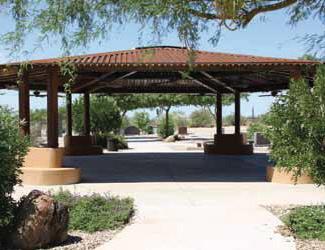
Instead they hosted a drive-by celebration. Jordanna saw her friends one car at a time and gave out cupcakes and cookies. She was disappointed about not being able to have a big party, but she has also shifted her focus and is looking forward to her do-over bat mitzvah service this coming May.
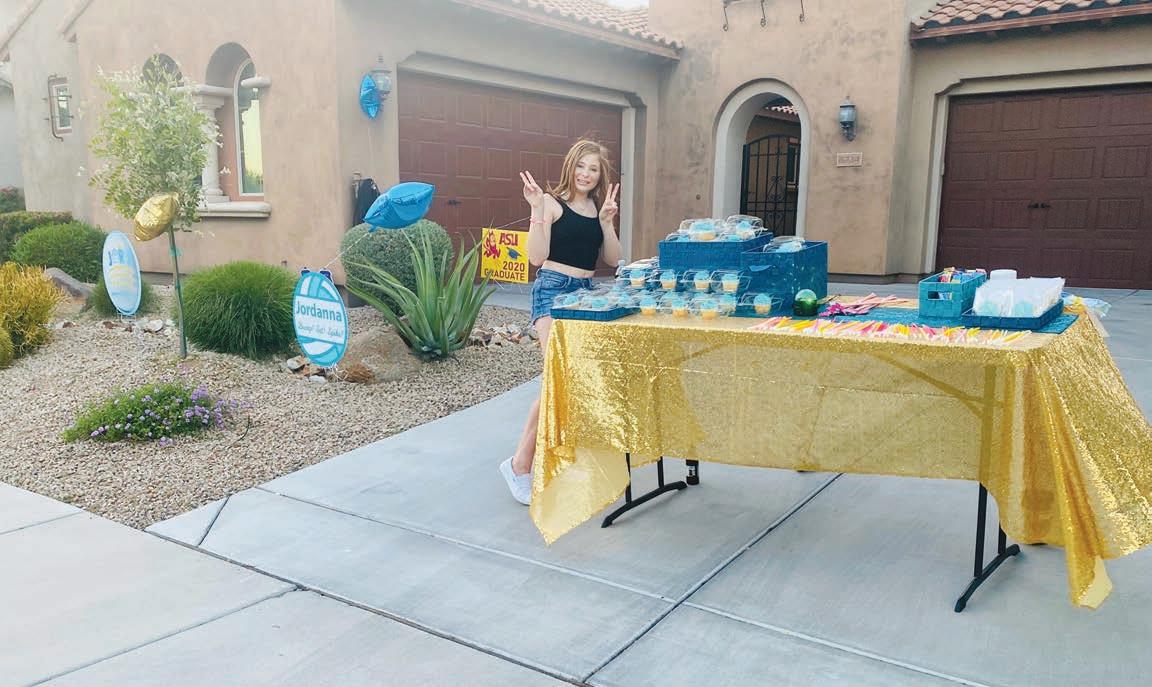
“I’m glad I could redo it and actually know more about it, and have the people that care about me come.” She feels like a different person compared to last year, and said the ceremony is more important to her now, whereas the party was more important to her then.
For Ellie Gottlieb, 13, the most important aspect of her bat mitzvah was the service itself.
When she envisioned her bat mitzvah it was inside The New Shul’s sanctuary, with her family and friends watching.
What ended up happening — a backyard bat mitzvah with family and friends watching on Zoom — wasn’t what she expected, but she wouldn’t change it now if she could.
More people attended who may not have otherwise been able to without
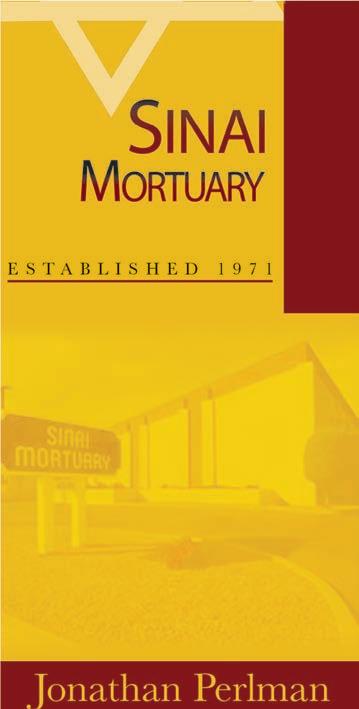
imagined. After all, you can’t exactly put a chat thread into a scrapbook.
But “in the end, it still felt very whole to us,” she said.
Liza Golden said not having a party made the experience less stressful and allowed her to enjoy Nadav’s ceremony in a way she wasn’t able to with her two older children.
During her previous kids’ ceremonies she found her mind racing. “Is the food ready? Is everybody happy? Is he here? Is he seated? Do we have enough kipot? You are so worried about making everyone happy,” she said. “You know, do I look okay? What’s going to happen this evening at the party?”
But during Nadav’s ceremony, there was none of that.
“This was a pleasant experience,” she said. “It was purely about Nadav being called to the Torah. It was a pure experience — it wasn’t disrupted by minutiae.”
And, because of the more intimate setting, she was able to enjoy the ceremony from a new perspective. She couldn’t physically see her middle son at the bimah during his bar mitzvah because of the mechitza


“I was able to see Nadav perfectly,” she said. “I stood up, I saw his performance, I was much better connected to him while he was doing it. He made eye contact with me.”
Time will tell how Zoom gets incorporated into bar and bat mitzvah ceremonies in a post-COVID world, but Deitsch sees it as an option to be considered.
“The way I envision it — and I hope to share this message with the parents — is that we found an additional way to celebrate the bar mitzvahs and bat mitzvahs,” he said. “As we explore the previous available options, let’s explore these options as well, which I think will enhance and give the child an opportunity to really grow.”
JEWISHAZ.COM JEWISH NEWS MARCH 26, 2021 3
• Jewish Owned and Operated • Sidewalks at Every Grave • Caring Professional Sta • Intermarried Families Welcome (480) 585-6060 24210 N. 68th Street, Phoenix (o Pinnacle Peak Rd) mtsinaicemetery.com @ Arizona’s Only Jewish Funeral Home @ Arizona’s Only Member of the Jewish Funeral Directors of America @ Arizona’s Only Jewish Owned & Operated Funeral Home @ Arizona’s Only Funeral Home Endorsed by the Entire Rabbinical Council
JN A
Jewish Cemetery that cares about the Jewish Community
PESACH at Beth El


Thursday, March 25 7:45 am
Chabad of Flagstaff advertises special Passover destination
Saturday, March 27 6:00 pm–7:00 pm

Haggadah Study & Discussion
7:00 pm–7:25 pm
Passover Songs
7:25 pm–8:00 pm
Community Seder
8:00 pm–8:30 pm followed by Passover songs, dessert & wine
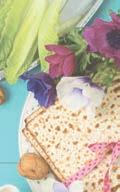
Sign up at www.bethelphoenix.com/ passover-2021
I want to thank the selfless e orts of so many from our community who have stepped up to help others during these di cult times. Thank you for responding with compassion, resiliency, and hope.
I wish you all chag sameach “next year in person”!
With love - Rep. Alma Hernandez
Rabbi Dovie Shapiro of Chabad of Flagstaff hopes people realize they have the opportunity to wake up to a beautiful mountain view this Passover. And the bonus is they will only be a hop, skip and a jump from one of the seven natural wonders of the world: the Grand Canyon. The fact that the space was custom built to accommodate Jewish guests, Shapiro suspects, will be a big draw for those looking for kosher food and religious services.
When Shapiro and his wife, Chaya, first envisioned the Molly Blank Jewish Community Center in Flagstaff, they saw the potential for a hospitality suite for traveling groups or a Shabbaton in a scenic locale.


Phoenix-based Penina Allison Meyer stayed in the hospitality suite with her husband and two kids — ages 5 and 6 — during Sukkot last October. She learned of the center’s overnight offering when she stayed there as a guest during its grand opening in September 2019.
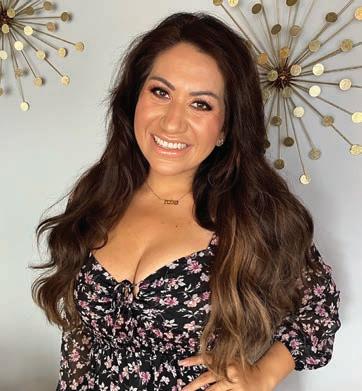
A few months before it opened, the construction site was vandalized with antiSemitic graffiti. But Flagstaff’s Jewish community wasn’t deterred by the incident and neither was Meyer.
She’s been back a few times since for Shabbat and other occasions.
“There is a gorgeous mountain view right outside,” she said. “Arguably the best feature for a family is the playground located right outside the door.”
The center’s hospitality suite, which can host up to 20 people at once, has ended up serving a broad range of travelers. The Grand Canyon is less than 2 hours away, and Sedona is even closer.
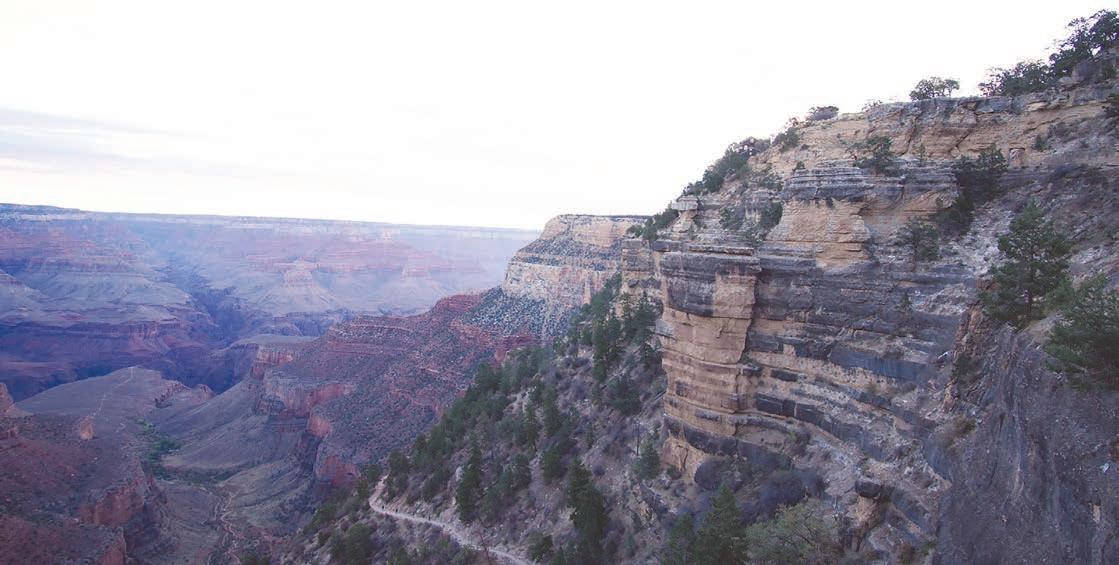
“We have travelers that come from all over the world,” Rabbi Shapiro said.
With kosher food available, he sees the center as the perfect destination for the upcoming holiday. Passover tourism has grown in popularity as more families decide to skip the scrubbing and cleaning that comes with the eight-day holiday and go somewhere that has already been de-chametzed
“Passover is a big undertaking,” Shapiro pointed out.
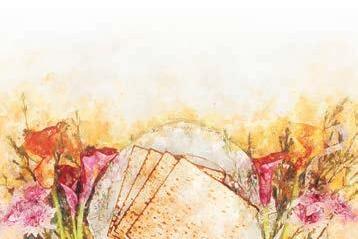
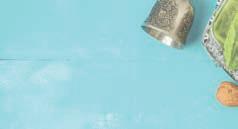
Chef Haim Leibowitz from Cleveland will be preparing all of the kosher food, even
providing food to go for families who may be doing a day trip or for kosher travelers in general. He will run a pop-up restaurant March 30-April 1, offering breakfast and lunch for pick-up from 8-10 a.m and dinner from 6-8 p.m.
Raphi Bloom, co-owner of TotallyJewishTravel.com, a Kosher travel website, said Passover tourism has grown exponentially over the past 10-15 years. It is becoming more global, having spread from Israel, the U.S. and Canada. He said Passover vacation packages run the gamut from being low-key, retreat-style weekend getaways to 10-day luxurious expensive and “glitzy” stays.
He isn’t surprised that Flagstaff is joining a solid market for Passover vacations at national parks, especially given its proximity to the Grand Canyon. “That definitely would appeal to people who may not want the cost, or the glamour or the glitz but still want to get away for Pesach and be in a Jewish environment,” he said.
Chabad of Flagstaff has blackout dates on Airbnb that are linked to Jewish holidays or busy seasons for kosher travelers, ensuring people who need the kosher and religious amenities have first dibs. During any part of the year, people can book the suite directly through Chabad of Flagstaff instead of Airbnb in order to avoid the latter’s booking fees.
Even though the space was built to accommodate Jews, travelers of all backgrounds have come across the Airbnb listing and stayed in the suite. The cost on average is $320 per night on a weekday and $360 per night on a weekend, depending on the season.
Alysa Greenberg, who manages the hospitality suite for Chabad of Flagstaff, said the space itself is “neutral” and it is possible that a visitor wouldn’t know they are in Jewish space. “We have had groups of people stay the night before their big hike into the Canyon, or the night before they go on a big rafting trip,” she said.
Greenberg has helped Chabad’s space earn
a “Superhost” status on the Airbnb listing, a ranking that Airbnb awards to listings that meet high-performance criteria every quarter, including a 1% cancellation rate or lower, and a 4.8 overall rating. “We have gotten a lot of great feedback,” she said. “A lot of people compare it to a high-end hotel.”
The status is buoyed by positive Airbnb reviews such as, “One of the most comfortable beds I have ever slept on. Very clean and welcoming space. Highly recommended and would eagerly stay here again!” and “Great place for a big group, very clean and in a great location.”
Meyer doesn’t know when she’ll be back, but “it will definitely be this year. We can’t stay away for too long,” she said. JN
4 MARCH 26, 2021 JEWISH NEWS JEWISHAZ.COM HEADLINES
LOCAL
A view from the Bright Angel trail head in the Grand Canyon on October 31, 2020.
There are two bedrooms lined with bunk beds inside Chabad of Flagstaff’s hospitality suite.
PHOTO COURTESY OF CHABAD OF FLAGSTAFF
The Chabad of Flagstaff hospitality suite has its own access to a playground and picnic area.
VIRTUAL
NICOLE RAZ | STAFF WRITER TAANIT BECHOROT
SIYUM
VIRTUAL EREV PESACH
‘The whole teen movie scene’ looks different after COVID-19




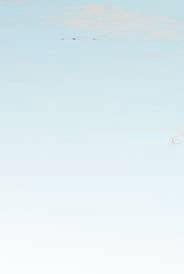 NICOLE RAZ | STAFF WRITER
NICOLE RAZ | STAFF WRITER
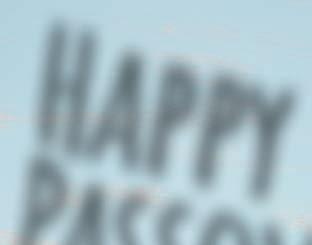
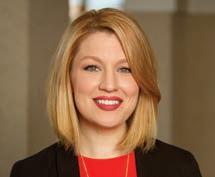
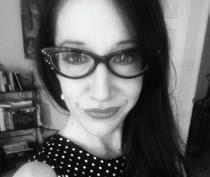
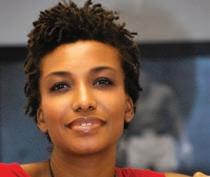


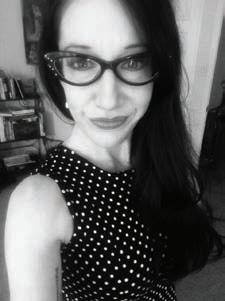









By the time Marlie Nochomovitz finally got her driver’s license, there was nowhere to go.
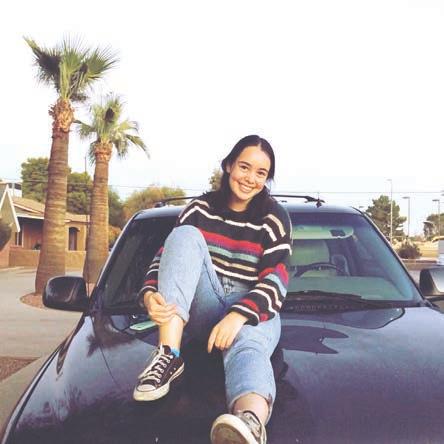
“My friends and I were all getting it within the same couple months. And we were so excited to be able to drive around, sing music, windows down — you know, the whole teen movie scene,” she said. But the week after she got her driver’s license on March 5, 2020, the world responded to the COVID-19 pandemic with sweeping school and business closures and stay-at-home orders.


High School, is not the only teen who described this past year as “rough.” Ellie Sims, 17, said being a teen during the pandemic is “really awful,” while Joey Varcoe, 17, said it’s been “disappointing.”
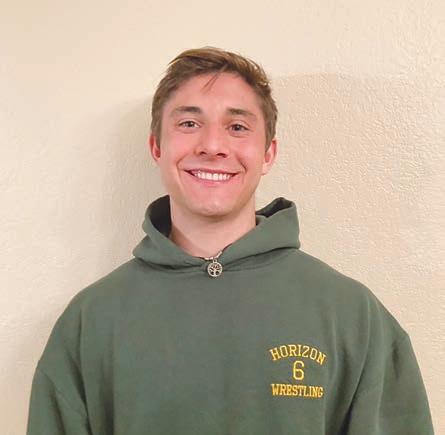

Driving, dancing at prom and graduating in front of friends and families are normal rites of passage for teenagers. But COVID has changed what high school looks like, and teens have had to adjust their expectations.
Sims, a senior at BASIS Chandler, was looking forward to the senior send-off parade the school usually has in February for graduating students. “Usually all of the classes are on pause and all students line the hallways and seniors walk through and say goodbye to everyone and all the teachers,” she said.
That didn’t happen this year.



She didn’t get a senior prom, either. “I am relatively upset about that,” she said. “It’s another thing that would have been great and that happens all the time in the movies.” She is sad she won’t get to wear a fancy dress and get her nails done, but “it’s not the end of the world.”
Being stuck at home has not been fun or easy. But the worst part of the pandemic has been isolation from her friends, said Nochomovitz, 17.

“My parents and I have gotten close in the past year, which is really nice. But, I mean, they are my parents,” she said. “There are just some things that I want to tell my friends about. Granted, not a lot is going on, but not being able to sit and


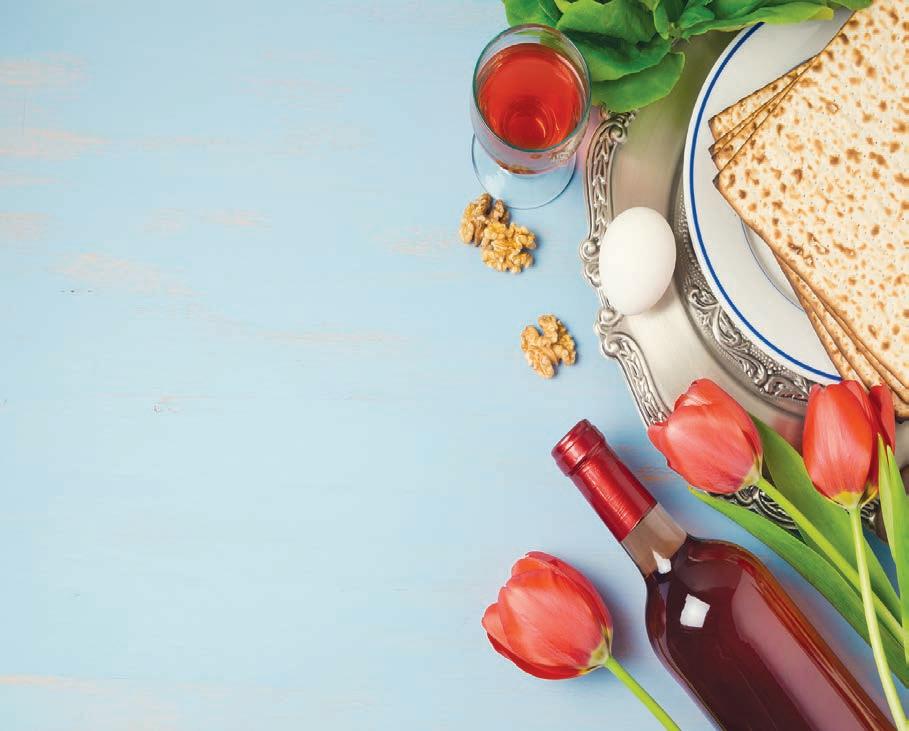
Sims is most disappointed about the yearbook. “It’s not really happening — we just don’t have any pictures to put in it.”
In her mind, the yearbook is the kind of thing she would have liked to be able to pull out and show her kids one day. “I’m upset that I’ve had all of these people in my life for so long, but I don’t have any final pictures of us together,” she said.
and do community service work through a program offered by BBYO. He was supposed to grow as a wrestler, a sport he took up right before COVID hit. He was supposed to go to Halloween parties and prom. He was supposed to deepen his friendships, but instead he has “lost contact with a lot of people,” he said.
“It sucks, but there’s nothing you can really do,” Varcoe said. “It’s just how the world has gone.” At this point, he’s just looking ahead to better times and feels hopeful as the vaccine is distributed and more businesses reopen.
Sims and Nochomovitz also have their gazes set on brighter times.
Sims will have her high school graduation in May, and her graduating
class is so small it will still be somewhat “normal-ish” with an in-person ceremony.

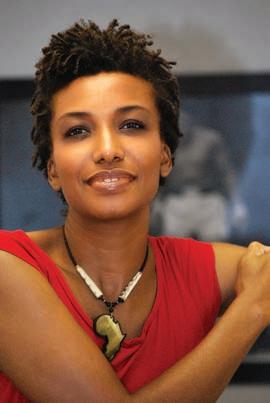





She was accepted into Georgetown, her “dream school,” in December. She hopes to begin in-person classes in the fall, “assuming the world is going to be better soon” and everything works out with financial aid. She wants to study government and is excited for potential “Hillternships” while living in Washington, D.C.
With one year left of high school, Nochomovitz is hopeful she will get to experience prom and graduate in nonCOVID times.
“Despite not being able to go out and have the life of a teenager, I am happy with my life,” she said. JN


MARCH 26, 2021 5 HEADLINES
LOCAL engages women in building a stronger TO REGISTER, PLEASE GO TO THE WOMEN’S LEADERSHIP INSTITUTE’S WEBSITE AT WOMENLEARNING.ORG www.rdpoet.com Executive Director, Arizona Commission on the Arts www.azarts.gov LEADERSHIP IN THE ARTS:
TO SURVIVE AND THRIVE TUESDAY, APRIL 20, 6:30-7:30 SPONSORED BY THE WOMEN’S LEADERSHIP INSTITUTE CO-SPONSORED BY The Women's Leadership Institute engages women in building a stronger Jewish community. www.rdpoet.com Executive Director, Arizona Commission on the Arts www.azarts.gov LEADERSHIP IN THE ARTS: HOW TO SURVIVE AND THRIVE TUESDAY, APRIL 20, 6:30-7:30 SPONSORED BY THE WOMEN’S LEADERSHIP INSTITUTE CO-SPONSORED BY www.rdpoet.com Executive Director, Arizona Commission on the Arts www.azarts.gov LEADERSHIP IN THE ARTS: HOW TO SURVIVE AND THRIVE TUESDAY, APRIL 20, 6:30-7:30 SPONSORED BY THE WOMEN’S LEADERSHIP INSTITUTE CO-SPONSORED BY The Women's Leadership Institute engages women in building a stronger Jewish community. Dr. Rosemarie Dombrowski www.rdpoet.com Arizona Commission on the Arts www.azarts.gov LEADERSHIP IN THE ARTS: HOW TO SURVIVE AND THRIVE TUESDAY, APRIL 20, 6:30-7:30 SPONSORED BY THE WOMEN’S LEADERSHIP INSTITUTE CO-SPONSORED BY The Women's Leadership Institute www.rdpoet.com Executive Director, Arizona Commission on the Arts www.azarts.gov Founder, BELLbulletin • L!VEPOET!C LEADERSHIP IN THE ARTS: HOW TO SURVIVE AND THRIVE TUESDAY, APRIL 20, 6:30-7:30 SPONSORED BY THE WOMEN’S LEADERSHIP INSTITUTE CO-SPONSORED BY The Women's Leadership Institute engages women in building a stronger Jewish community. Dr. Rosemarie Dombrowski Poet Laureate of Phoenix Founder/Director of Revisionary Arts www.rdpoet.com Executive Director, Arizona Commission on the Arts www.azarts.gov Founder, BELLbulletin • L!VEPOET!C LEADERSHIP IN THE ARTS: HOW TO SURVIVE AND THRIVE TUESDAY, APRIL 20, 6:30-7:30 SPONSORED BY THE WOMEN’S LEADERSHIP INSTITUTE CO-SPONSORED BY The Women's Leadership Institute Marlie Nochomovitz PHOTO BY ELLIE SARFATI WUNDERVISUALS / ISTOCK / GETTY IMAGES PLUS
HOW
jewishaz.com Happy Passover Print | Digital |
"MY PARENTS AND I HAVE GOTTEN CLOSE IN THE PAST YEAR, WHICH IS REALLY NICE. BUT, I MEAN, THEY ARE MY PARENTS."
After year of COVID, Prescott’s Temple B’rith Shalom ‘heading in right direction’
SHANNON LEVITT | MANAGING EDITOR
Rabbi Julie Kozlow hopes this year’s Zoom seder on March 27 will be more palatable for Temple B’rith Shalom’s congregation than the first Passover during COVID. At least everyone is much more familiar with technology.
Last year was “a bit technologically traumatic,” Kozlow said, joking that Zoom is now her “best friend.” And due to vaccinations and good outdoor weather, this Passover will feature one in-person activity. On March 31, the synagogue will host a musical service outdoors, which will be followed by a group hike.
But more consequentially, congregants have become familiar with Kozlow.
She started in Prescott only four months before COVID-19 struck and hardly had the opportunity to hold many in-person services before they ceased altogether. The pandemic arrived just as she was getting in the swing of things, which pretty much eclipsed the possibility of a normal tenure.
“I was so devastated,” she said. “I didn’t know if I would be able to be what my congregation needed.”
But the new rabbi persisted. She was determined not to let the pandemic — or any challenge — change the goals she had when she moved to Prescott from Wilmington, North Carolina.
Kozlow was drawn to Prescott, in part, because she suspected in a smaller city she would find congregants with more “spiritual hunger to live a better and more meaningful life.” Originally from Los Angeles, California, she felt a smaller town and synagogue would allow her to be closer to people. “There’s an intimacy that I think people need that you can get at a small synagogue,” she said.
Even with social distancing requirements in place, she worked to make that idea a reality. Instead of meeting at the synagogue, she chatted with people in their backyards and sitting on patios. She made a point of not letting herself get isolated just because she couldn’t meet many people in person. “I still show up for those who need to see their rabbi,” she said.
Kozlow quipped that the trials of being new in town during one year of COVID made it seem like 10, but her work seems to have paid off. She does feel the deep connection with her congregation that she sought. People are excited that she’s “taken the reins” and invited them “to hop on board,” she said.
Even while the pandemic raged, the synagogue’s membership has slowly crept up, and its Hebrew school, which
once had four occasional students, has blossomed to 15 regulars.
“She has done a fabulous job in terms of building her congregation, which is what the congregants wanted her to do when she came here,” said Christine Resnick, executive director of Greater Prescott’s Jewish Community Foundation.

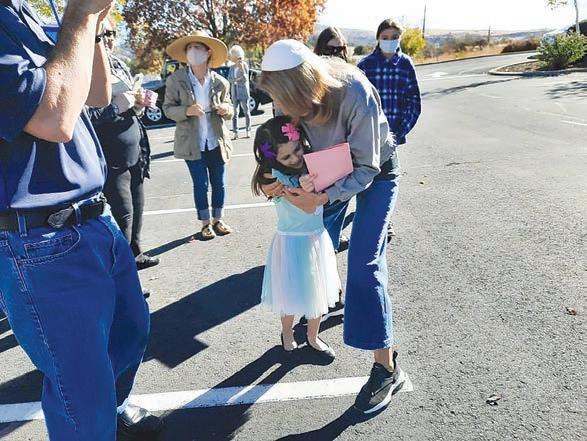
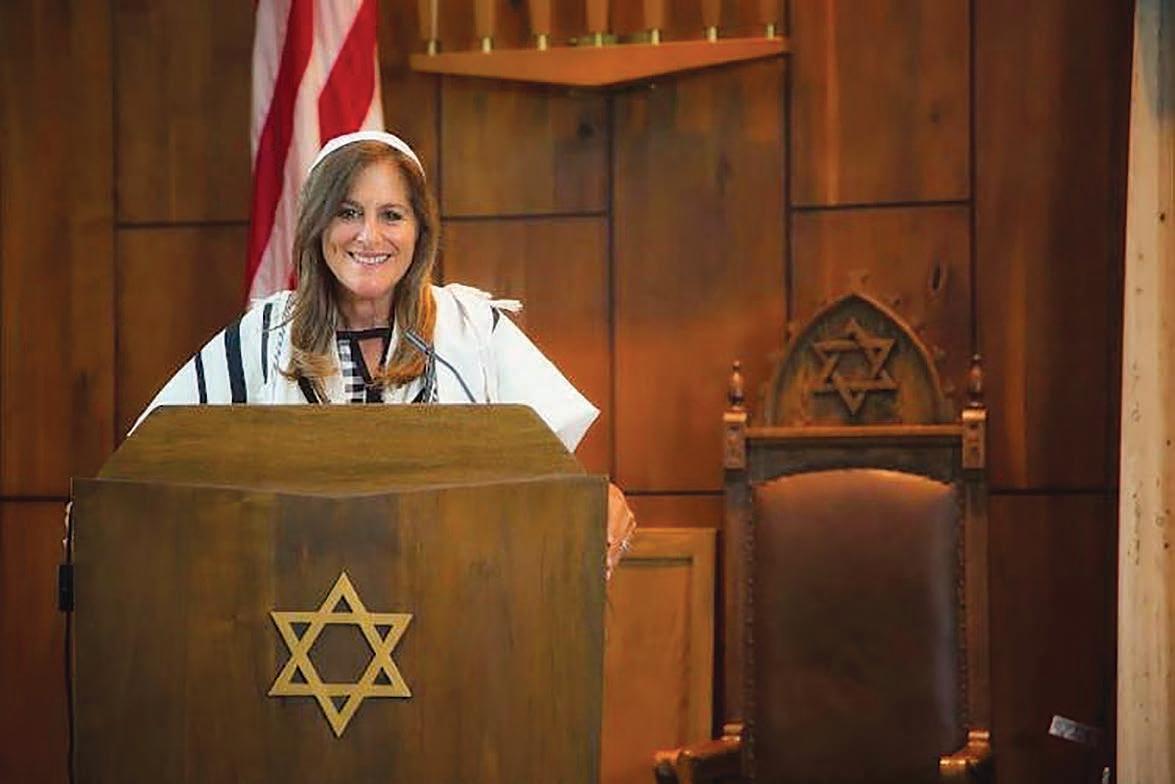
Kozlow has reached out to people who were unaffiliated before, Resnick said. “They, in turn, have reached out to other families and that’s why her school is growing.” COVID has caused people to reconsider how they spend their time, and Kozlow has been able to give them “a sense of spirituality and connection,” contributing to B’rith Shalom’s growth, Resnick said.
“She has united us,” Shara Beck said. Before Kozlow arrived, there was
discombobulated.”
Greg Raskin, whose parents were some of the original founders of B’rith Shalom, appreciates how proactive Kozlow has been even in the face of COVID. “Jewish families have moved up here, and they’re interested in getting their kids involved, and Julie has really done a good job with that,” he said.
For Kozlow, it’s all about being “connected to the pulse of the congregation,” she said.
Still, it hasn’t been perfect. One hiccup followed the riot in the U.S. Capitol on Jan. 6. Kozlow suddenly found herself breaking her own rule against politics inside the synagogue.
Upon her arrival in Prescott she
their liberal rabbi had overstepped. But if they were hoping for a sympathetic ear from the president whose politics aligned with their own, they were likely disappointed.
“Everybody knows I’m a Republican and everyone knows that she is not, and that’s OK,” Steinhauer said.
“This synagogue is all that’s important, and our membership has got to make sure this synagogue is the goal,” she said. “That’s just the key.”
Kozlow owes much of her success to the solid relationship she has with Steinhauer, she said. “Without Trudy I could not have done it,” Kozlow said. “She’s as focused on the health and welfare of the congregation as I am.”
Kozlow hopes their relationship is a model on how to debate issues respectfully.
She’s since resumed her mantra of no politics in the synagogue, but said there might be future exceptions. “I assume it was easier when we didn’t talk about anything. Now we’re going to have to talk. It’s a new chapter.”
But her focus is on the congregation in front of her which she said is “heading in the right direction.” People need each other and need their faith. There are no “fair-weather or shallow relationships," she said.
“I’m happy to quietly do great work for God,” Kozlow said. “It doesn’t shine in glitter, but there’s something really beautiful happening here.” JN
6 MARCH 26, 2021 JEWISH NEWS JEWISHAZ.COM HEADLINES
LOCAL
Rabbi Julie Kozlow of Temple B’rith Shalom in Prescott
PHOTO COURTESY OF RABBI JULIE KOZLOW
Temple B’rith Shalom marked Rabbi Julie Kozlow’s first anniversary in Prescott with a drive-thru celebration. PHOTO COURTESY OF RABBI JULIE KOZLOW
New program teaches educators, students how to talk about Israel
NICOLE RAZ | STAFF WRITER
Andrew Gibbs is ready to chat about Israel any time.
But in his role as director for the Israel Center of Arizona State University’s Hillel Jewish Student Center, he finds that “a lot of times” students shy away from the topic.
“They think Israel is a super religious place, and they don’t identify in that way. Or maybe they don’t feel like they have a place in the Jewish homeland. Or maybe they think that Israel is a very controversial place, and they want to stay away from controversy,” he said. “I think there’s often a lack of understanding of the nuances and being able to hold multiple things at the same time.”
Gibbs completed a new iCenter program this month that he feels will help him when he talks to hesitant students.
The iCenter, which is a hub for Israel education and supports educators, launched a new Certificate in Experiential Israel Education this year, and Gibbs was part of the first group of educators to go through the six-week program.
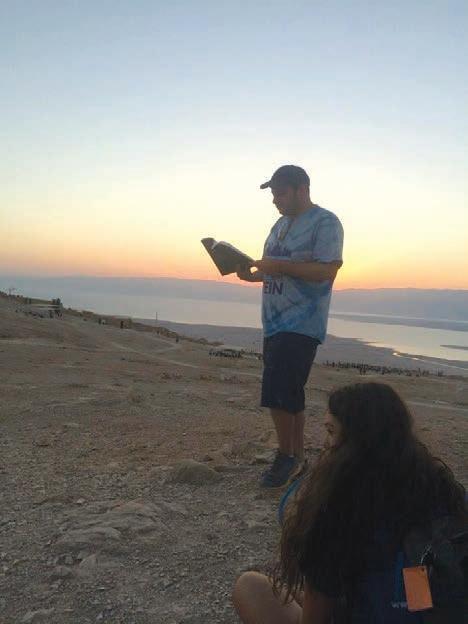
“This program talked a lot about being able to sit with difficult topics,” he said, and
helping students to be able to see diverse narratives. “And it was very focused around immersive Israel experiences.” Next time he asks a student what their favorite part of a trip to Israel was, and they “without a doubt” say it was the food, he will point out to them where they can get Israeli food locally and/ or on campus, he said.
Anne Lanski, founder and CEO of the iCenter, said Israeli culture offers many ways for educators to help students build their own relationship with Israel.
“Yet this opportunity can be overshadowed by political polarization, toxic campus environments and hesitation among Jewish educators to embrace Israel — and its educational possibilities — as integral to their work,” she said. “This new program will help train educators and engagement professionals, and instill in them the confidence and depth of knowledge, to support Jewish students.”
Jennifer Selco, director of Jewish Life and Learning at the Tucson Jewish Community Center, also participated in the first cohort of the iCenter’s new program. She said the program gave her new ideas about engaging the wide variety of people who engage with Tucson’s JCC and help “Israel come to life.”
On a personal level, she said, the program exposed her to new narratives around Israeli life and culture. “We learned about the conflict around land and even some of the nuances around the ideas of Zionism,” she said. “We learned about those aspects from both a deeply academic and unique personal perspective.”
Jason Bronowitz, principal of Congregation Beth Israel’s religious school and youth, is looking forward to incorporating some of the programs into his approach for directing Camp Stein this summer. For example, he plans to reflect with his staff about their own camp experiences. “It’s not just content, but it’s about our lived experiences, and how those shape who we are and how we can be conscious of that when we’re teaching,” he said.
The Certificate in Experiential Israel Education program will be offered at least six more times this year. The program is designed for early to mid-career professionals for whom Israel education is a part of their work, but who do not necessarily see themselves as Israel educators. The program is also open to teens who are responsible for Israel education in their youth groups, summer camps,
synagogues and school Israel clubs. While planning for the certificate program was underway for years, the pandemic accelerated the final planning and launch of the entirely virtual program. Support for the program comes from Charles and Lynn Schusterman Family Philanthropies, the Jim Joseph Foundation and the Paul E. Singer Foundation through the Jewish Community Response and Impact Fund.
The next cohort begins Tuesday, April 20. JN
To apply, visit certificate.theicenter.org.
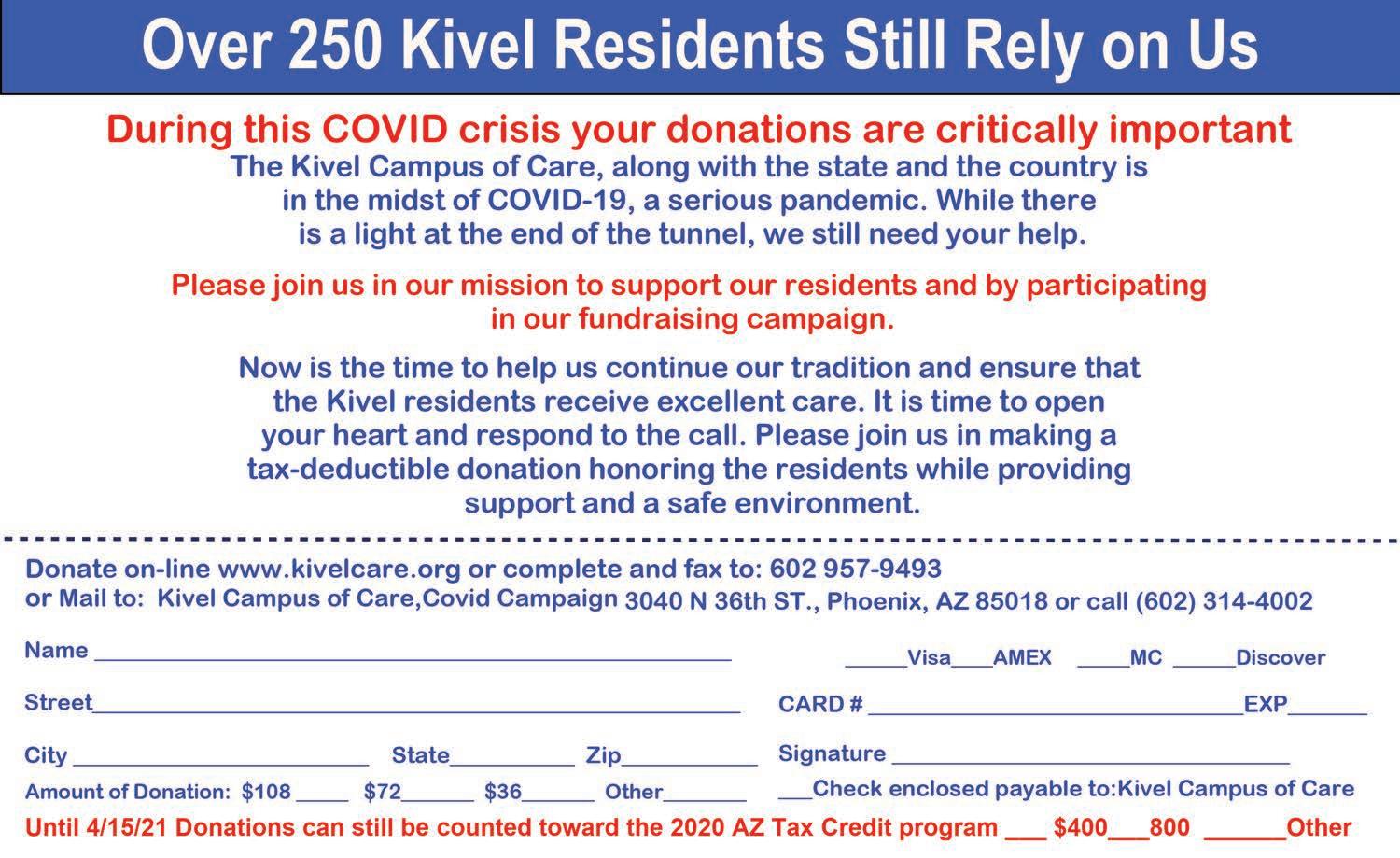
JEWISHAZ.COM JEWISH NEWS MARCH 26, 2021 7 HEADLINES
LOCAL
Jason Bronowitz in Israel.
PHOTO COURTESY OF JASON BRONOWITZ
Scottsdale writer crafts memoir through a ‘Jewish lens’
 JENNIFER BAUM | CONTRIBUTING WRITER
JENNIFER BAUM | CONTRIBUTING WRITER
AJewish story doesn’t have to center on obvious themes like the Holocaust or weddings and b’nai mitzvah, according to Linda Burt Pressman. Stories about raising children or divorce can be Jewish stories too, when viewed through a Jewish lens, she said.
“My goal is to help people discover and develop the Jewish stories they have within,” said Pressman, who writes memoir and teaches classes on how to write using a Jewish lens.

Pressman has a lot of experience crafting her own Jewish stories. She was raised in the 1960s and early ’70s in Skokie, Illinois, a northern suburb of Chicago. At that time, there was a large Jewish and Holocaust survivor population in Skokie, and Pressman’s parents were Holocaust survivors. Her mother hid throughout the war years in the forest while her father was transported with his family to Siberia.
Pressman’s written an award-winning memoir about her family’s life, “Looking Up: A Memoir of Sisters, Survivors and

Skokie,” which won Writer’s Digest’s grand prize in its 20th annual contest and is housed in the permanent collections of Yad Vashem in Israel, the US Holocaust Museum in Washington, D.C. and the National Library of Israel. She’s currently working on a second memoir about her family’s move in 1973 from Skokie to Scottsdale when she was 13.
Pressman took her first creative writing class at Paradise Valley Community College over twenty years ago. She then went on to earn a master’s degree in English from Northern Arizona University. In her first writing class, she had to relearn how to use the personal pronoun. “First-person narration was beaten out of me in my eighth-grade composition class,” she said. “In my first creative writing class, I was given permission to use this again, which is essential for personal reflective memoir writing.”
Initially, Pressman didn’t think she had an interesting story to tell because in her family the only story was about surviving World War II. “Nothing compared to the Holocaust, so if I didn’t have a Holocaust story,

there was nothing to write about,” she said.

But during that first writing class, she discovered her own Jewish lens and realized that anything can be a Jewish story, even her own childhood as a suburban kid growing up with survivor parents. Though her parents were no longer believers, they still raised her with other elements of Judaism. Yiddish, for example, made for a ripe subject in her writing.
In a scene from her memoir she discussed the mixture of English and Yiddish when referring to food. They were “creating a pidgin form of English, a patois.” “Leg” and “wing” became “polka” and “fleagle.”
When Pressman visited a friend’s house, she believed she was a regular American kid who spoke accentless English. But she found herself at a loss when conversing with her friend’s family. She wrote about an incident when her friend’s mother, Mrs. Winkler, served chicken and told Pressman to pick whatever piece she’d like:

8 MARCH 26, 2021 JEWISH NEWS JEWISHAZ.COM HEADLINES LOCAL
SEE WRITER, PAGE 27 Cover of Linda Pressman's book PHOTO BY DW PHOTOGRAPHY From your favorite restaurant to the best bagel… Day camp to your favorite doctor… Shabbat service to best nonprofit organization... The winners are chosen by popular vote, so let your friends know it’s time to cast their ballot. As a business, share with your audience to help you win the title of “Best” in your category! VOTE FOR THE WINNERS! Print | Digital | Voting closes May 16 Voting for the winners starts on March 28. Winners will be contacted in June and the results will be in the Best of Jewish News magazine. Go online and tell us what you think! readerschoice.jewishaz.com
What if the sea waters had not parted?
The problem is severe. In the four months from October 2020 through February of this year, 29,792 unaccompanied minors have crossed the southern U.S. border — 9,457 of them in the last month. Roughly 10% of the minors are below the age of 12.
America’s long-simmering migrant dilemma has flared up again, to the highest levels in 20 years. There is no end in sight, and the numbers are staggering. There is also no clear plan to deal with the problem.
The immigration challenge has long been a potent political bludgeon. Donald Trump famously hammered on the issue during his political rise, and lashed out against immigrants during his time in office. The Biden administration’s promise of compassion, restraint and orderly administration have not yet been fully developed, and Biden’s team is struggling to deal with the overwhelming numbers seeking refuge.
Republicans are saying, “We told you so,” and are sharpening their political knives. And at least thus far, the Biden administration has appeared unprepared
to deal with the immigration surge. Something needs to be done. A comprehensive bipartisan resolution of the immigration challenge is in the best interest of all Americans. In order to
border wall. Last week, the House passed legislation to establish a path to citizenship for the “dreamers” brought to this country as children. And a comprehensive immigration bill is in the
WHAT IF OUR FAMILIES FELT THE NEED TO FLEE VIOLENCE AT HOME, WERE PURSUED BY ENEMIES AND FOUND OURSELVES AT A WALL OF WATER? WHAT IF THE SEA WATERS HAD NOT PARTED, LETTING US EMERGE TO FREEDOM, AWAY FROM THE DANGERS OF THE PLACE WE ESCAPED?
achieve that, however, we need to stop the finger pointing, name calling and political gamesmanship, and get down to the serious business of addressing comprehensive immigration reform.
On his first day in office, President Joe Biden signed a proclamation to end construction of the Trump
Don’t forget Jordan
Amid the hoopla surrounding the Abraham Accords, the fireworks accompanying the U.S. Embassy’s move to Jerusalem, the frustrating stalemate with the Palestinians and the darkening shadow of Iran, have we forgotten about Jordan? The small but strategic kingdom on Israel’s long eastern flank declared peace with the Jewish state 27 years ago.
It has been a cold peace, to be sure. Jordanians, the majority of whom are also Palestinians, are not flocking to Tel Aviv beaches, and commerce between the two countries has been limited. But peace has endured. And Israel is the better for it.
Recently, however, relations between the two countries have begun to fray. This month, Jordan’s crown prince canceled a visit to pray at al-Aqsa Mosque in Jerusalem. That is significant because Jordan’s “special role” as guardian of Muslim holy sites in Jerusalem is a clear term in the peace treaty with Israel. Israel said the cancellation was over a disagreement about how many palace guards would be permitted to cross the border. But Jordan claims that Israel
set unacceptable limits on the number of Palestinians who are allowed on the Temple Mount.
It didn’t end there. Jordan prevented Prime Minister Benjamin Netanyahu from using Jordanian airspace on his planned (but later aborted) flight to
process of being unveiled in Congress. Among its provisions: permitting a pathway to citizenship for 11 million undocumented immigrants.
Passover is a particularly opportune time to think about immigration. What if our families felt the need to flee violence at home, were pursued by enemies and
found ourselves at a wall of water? What if the sea waters had not parted, letting us emerge to freedom, away from the dangers of the place we escaped?
In our time, immigration and border crossing solutions must come from our government. But how we handle the issue — and the compassion and understanding we show to those fleeing threats and violence and seeking a better home for their families — is a moral and ethical challenge that confronts the people.
Immigrants should not be demonized. Those seeking a new home, safety and opportunity are all of us. We can and should weed out the bad actors or those not appropriate for clearance, but that can only be done with a carefully developed plan and national commitment to compassion and fairness.
Immigration reform is an issue we should all be tackling together. We encourage our elected leaders to address the issue with care and understanding, and in a manner that will make us proud to be citizens of “the land of the free.” JN
much since Prime Minister Yitzhak Rabin and King Hussein signed the historic treaty in 1994. There have been significant mutual benefits, including cross-border businesses that employ thousands of Jordanians, the expansion of Israel’s sale of natural gas to the kingdom
THERE HAVE BEEN SIGNIFICANT MUTUAL BENEFITS, INCLUDING CROSS-BORDER BUSINESSES THAT EMPLOY THOUSANDS OF JORDANIANS, THE EXPANSION OF ISRAEL'S SALE OF NATURAL GAS TO THE KINGDOM AND COLLABORATION ON THE ALLOCATION OF SCARCE WATER RESOURCES, AMONG OTHERS.
United Arab Emirates. The snub so infuriated Netanyahu that he reportedly ordered a halt to flights from Jordan to Israel. The possibility of escalation in these disputes must be avoided.
Israel and Jordan have accomplished
and collaboration on the allocation of scarce water resources, among others.
But Jordan is still smarting from a 2017 incident in which an Israeli security guard killed two Jordanians while responding to a terrorist attack at the Israeli embassy
A NOTE ON OPINION
in Amman. And tensions were further heightened during last year’s threats by Netanyahu to annex the West Bank. At the same time, Israel has been frustrated by Jordan’s refusal to publicly tout the gains it has achieved from close to three decades of peace.
There is also the issue of the growing American and Israeli tilt toward Saudi Arabia as the potential capstone of the Abraham Accords. That’s a problem because the Saudis make no secret of wanting to supplant the Hashemites, the Jordanian royal family, as the keepers of Jerusalem’s Muslim holy places, just as the Saudis kicked the Hashemites out of Mecca after World War I, even though the Hashemites had ruled Mecca for some 1,000 years.
All of this is cause for concern. Perhaps the U.S. can help by including the kingdom in any future IsraeliArab normalization deals. Or maybe Israel needs to figure out some way to acknowledge its historic peace partner. In all events, Jordan should not be taken for granted, and should be brought in from the cold. JN
We are a diverse community. The views expressed in the signed opinion columns and letters to the editor published in the Jewish News are those of the authors. They do not necessarily reflect the views of the officers and boards of the Jewish Community Foundation, Mid-Atlantic Media or the staff of the Jewish News. Letters must respond to content published by the Jewish News and should be a maximum of 200 words. They may be edited for space and clarity. Unsigned letters will not be published. Letters and op-ed submissions should be sent to editor@jewishaz.com.
JEWISHAZ.COM JEWISH NEWS MARCH 26, 2021 9
OPINION Editorials
Will we miss anything after we leave our pandemic cocoons?
DAVID SUISSA

ith vaccinations spreading rapidly like millions of bees pollinating prairies, the United States is finally starting to come out of its hibernation. Even Disneyland has announced it will reopen in April.
This reopening is uneven, to be sure. Some states are bolder than others, and new variants of the virus suggest we’re not out of the woods. But the overall trend is clear: We’re starting to see the light on the other side, that long-awaited ray of hope.
This is cause for deep gratitude. After a year of utter devastation, how vaccines have come so quickly to our rescue deserves to be celebrated
as a near-miraculous development. For those who are vaccinated, the mere reduction of anxiety feels like a rejuvenating tonic.
WSo, as we squint our eyes and crawl back to our old lives, how will we reengage with this new/old world?
I can’t speak for everyone, but my hunch is that many of us have taken on hibernation habits that may take time to shake. One of them is the extreme comfort of communicating virtually, from Zoom to Facetime to anything digital.
We may express exhilaration at finally “getting our lives back,” but how prepared are we to leave our cozy cocoons and reembrace our old ways? How ready are we to engage people and groups in person and in real time after being so snug and comfy in front of our digital screens?
We will soon be reminded that meeting in person — whether in offices, places of worship,
parties or events — is demanding. Most of our in-person interactions during the pandemic have been with family and close friends — people we’re already comfortable with. But in our “normal” lives, we also engage with the world at large. How will we deal with that world as the masks start to come off?
There’s something oddly exciting about all this. It’s like starting something familiar for the first time. Personally, I don’t mind the pressure of social environments because it brings out the best in me. I must look presentable, have interesting conversations, show respect and curiosity and meet those social norms that make us civilized.
Sure, it’s a lot more convenient to sit on a comfortable chair and do all of that human engagement on Zoom. It still amazes me how easily I have been looped into Zoom events from around the world during the pandemic. I have no doubt much of this will stay with us.
I lost my mom to undiagnosed COVID-19
JODI
AMENDOLA
ext week I will make brisket and charoset and set the table with fine china. But this Passover will be very different than any other. It will mark the first that my mom, Thelma Kurzweil, will not be at my seder. Her life was filled with many trials and tribulations, and she survived them all. But not this time. My mom’s life was cut short because she caught COVID-19 at her senior
It angers me when I read about people dismissing pandemic precautions because “they mostly affect the elderly,” or believe their own odds of dying from this devastating virus are infinitely small.
People are hurting in many ways — emotionally, financially, physically. Restrictions are difficult, masks are uncomfortable and it’s hard to relate to such a large number of deaths — more than 530,000 people have died in the United States alone, and there are more than 29.3 million cases, according to the CDC.
So let me tell just one story, my mom’s story, to show you a personal perspective. Before complaining about not being able to attend a sporting event or having to wear a mask to purchase a gallon of milk, I hope you remember her story.
My mom grew up in the Bronx, New York between the end of World War I and the start of the Great Depression. Her earliest memories were of hardship. Then people didn’t worry about whether they could dine in a restaurant, only whether they would have
enough to eat for dinner.
She cried tears of joy when she married the love of her life and shed many more when he left to fight in World War II. Joy found her once again when Dad returned after three years.
At the age of 45, my mom somehow survived a difficult and high-risk pregnancy with me after falling down a flight of stairs in an era when health care workers didn’t have the technology and knowledge they do today. She lived through polio scares, recessions and other turbulent times and survived them all.
When COVID hit, her assisted living facility went on lockdown. It was difficult on my vivacious mom — no more bingo or Shabbat dinners, which she loved. My husband, daughter and I had to visit through her window.
But like always, she told us not to worry
It’s simply too convenient and effective. But I know my weaknesses. I know, for example, that not schlepping on freeways to attend events is a habit I can happily get used to. That’s how convenience works — it sucks us in.
I also know, however, that what I gain in convenience, I can lose in humanity. That’s why I’m looking forward to jumping back into the give and take of human interaction, seeing real faces, real smiles, real reactions unfiltered by the comforting distance of digital. And let’s not kid ourselves: Compared to what some people have had to endure during this horrible year, re-engaging awkwardly with people and schlepping in traffic feel like the biggest blessings in the world. JN
and to be very careful as this virus was very dangerous. While age took its toll on her physically, she still had a remarkable zest for life.
In July she became ill and at one point was on death’s door, sleeping for 48 hours straight. The facility allowed us to visit her in her room. She rallied, and I watched the light come back into her eyes during my daily visits.
Then November came, and COVID cases in Arizona and across the country began to spike. Six residents and three staff members in her facility tested positive for COVID. I visited Mom from the window to ensure everyone’s safety.

Mom was tested, and the test came back negative. But the day before she received her result, Mom ate breakfast with someone who had COVID, I later learned.
The quest for curiosity jump-started at the seder
RABBI WARREN GOLDSTEIN
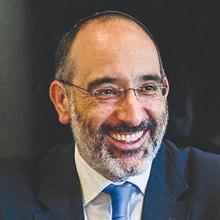
Learning to nurture curiosity is the quest of our times. How do we nurture in our children and in ourselves curiosity, not cynicism?
Fascination not apathy? How do we raise a generation of curious kids? In a fastchanging world, as technology shifts the way we live, learn, work and play — and established professions quickly become obsolete — how do we equip them with
the curiosity necessary to adapt and find their place? More fundamentally, in a world of mass cynicism and apathy, how do we raise our children to be engaged and enthusiastic, to be excited about life? And excited about being Jewish?
The Passover seder is a crash course in curiosity. We kick off the main section — during which we relive the great beginnings of the Jewish People, our Exodus from Egypt and our liberation from slavery — with “Mah Nishtanah?” (“The Four Questions”) traditionally sung or recited by the youngest child. One of the reasons we do this is as a warm-up exercise to provoke our curiosity for the remainder of the seder.
This element of curiosity, of childlike wonder, continues throughout the seder. We point, we probe, we speculate, we marvel. And it’s not just the children. If there are no children attending, then an adult will ask the four questions. Indeed, at the seder, we are all children; we are all curious. And if, like the simple son, we lack that curiosity and “don’t know how to ask,” others must “open up the conversation for us,” provoking us into a curious state.
People conventionally understand the seder to be about getting the children to ask questions. But it’s deeper than that. It’s about provoking curiosity. Curiosity is more profound; it’s what makes us care enough
to ask questions in the first place. To be curious is to show an interest — and to be interested enough to want to know more. It’s a fascination that is expressed through a question that arises in your mind.
The quest for curiosity is a driving Torah value. From a young age, we are taught and encouraged to ask questions to initiate the first stirrings of our intellectual curiosity. When we learn Torah, we are taught to be curious — to ask, to seek to understand.
In the great yeshivah study halls of the world, it’s the probing question that earns the highest approval of the rabbi and the
10 MARCH 26, 2021 JEWISH NEWS JEWISHAZ.COM
OPINION Commentary SEE AMENDOLA, PAGE 11
David Suissa is editor-in-chief and publisher of Tribe Media Corp, and Jewish Journal. This article first appeared in Jewish Journal.
SEE GOLDSTEIN, PAGE 11
Sweet aroma of inquiry rises to the heavens
and comprehensive specifications for the ordination of the priests.
hearts of the Jewish people.
eralding the foundational narrative of the Jewish people, the Grand Shabbat is born upon the evolutionary arc of a mountain top. Shabbat HaGadol calls upon us to remember our origins as an ancient mountain people, who cultivated a sociocultural hierarchy that mirrored the shape of elevated earth.
There, the mysterious and awesome Source of All Life dwelt at the apex between the mountain’s peak and the heavenly realm of sky. A cosmic umbilical cord, fostering connection and covenant, was formed between the divine and earthly beings. Modes of identity and ritual coalesced within the context of holiness, developing distinctive qualities over time.
We open parshah Tzav as a new creation story unfolds in the desert. Here, we encounter the family of wandering Hebrews in a state of formation, becoming Am Yisrael, the people of Israel, through the establishment of meaningful rituals. Parshah Tzav documents instructions for the priestly clan, with an emphasis on sacrificial practices
AMENDOLA CONTINUED FROM PAGE 10
We asked for another test, but we were told to wait until Monday to consult with the facility’s nurse. I visited my mom that Friday but I could tell something wasn’t right. I tried to get the facility, her doctor and caregivers to do more, but because Mom didn’t have a fever they didn’t think she had the virus, even after she developed a wet cough and other symptoms.
On her 96th birthday I went to see her from her patio, but her condition had gone from bad to worse. She didn’t have the energy to talk or to look at the book I made her with letters and photos from all her children and grandchildren. Still, those in charge resisted taking COVID-related measures. Finally, while she was struggling to breathe, the hospice nurse asked if we wanted to take my mom to the hospital or make her comfortable with oxygen and medication. My husband and I put on personal protective equipment and sat by her bedside as she gasped for breath until she slipped away. She hummed with us as we sang “You Are My Sunshine.”
Her positive COVID test result came a half hour after she passed away.
There are thousands of stories of lives that were cut short by COVID-19. If it were someone close to you, you would surely
HToday, it can be very challenging for us to imagine involvement with behaviors that facilitated the sacrifices. Therefore, it can be helpful to understand that such rituals predated the wandering Hebrews and influenced them, even though aspects of their emerging traditions reflected new ways of thinking and acting in the world.
An application of the term “sublimation” appears in the field of psychology, dating back to the time of Freud. In brief, it references undesirable or harmful behaviors that are replaced with less damaging, healthier and more productive ones. We could apply this term to the ways in which the sacrifices of ancient times have been replaced with more familiar acts of prayer and study.
Modern modes of Jewish observance reflect movement of the relationship between God and this mountain people over thousands of years: God accompanied the Israelites in a pillar of cloud or flame. Then, God camped among them in a special part of a tent. As the relationship endured, God received upgraded accommodations in a designated part of a magnificent Temple. Eventually, God came to live among the dispersed, in every corner of the world, within every Torah scroll, within the respective and collective
want to know you did everything you could to avoid this terrible outcome.
I share this story to put a face on COVID and help others understand what is at stake when they deny its dangers.
Thelma Kurzweil, my mom, had an amazing life and is the guiding force behind most everything I do. My mother-in-law also succumbed to COVID, and my daughter lost both of her grandmothers in six weeks. That’s what’s at stake.
We know how to keep this disease from spreading like wildfire. It’s not easy, but it’s also not that difficult. With a little caring, especially for people like my mom who are most vulnerable, we can avoid more sad endings. Wear a mask, socially distance, wash your hands and get vaccinated when you are eligible.
When you see those large numbers in the media, don’t think of thousands or millions. Think of Thelma Kurzweil and the family she left behind. And think of the pain we will feel not having our mothers for Pesach this year.
Please don’t forget — we are all in this together. JN
Jodi Amendola is CEO of Amendola Communications, a Scottsdale-based national health care, health information technology, public relations and marketing agency.

In every age, rituals supporting this sacred relationship bonded adherents to Judaism.
Interestingly, the Haftorah for parshah Tzav presents a contrasting perspective from the Prophet Jeremiah that may be more palatable for us today: God does not need sacrifices. “For when I freed your fathers from the land of Egypt, I did not speak with them, or command them, concerning burnt offerings, or sacrifice…Do my bidding, that I may be your God and you may be my people; walk only in the way that I enjoin upon you, that it may go well with you.” (Jer. 7:21-23)
Eventually, the rabbis taught that studying the sacrifices would be enough. So, what can we learn from this list of instructions besides a history lesson about a time many of us would be reluctant to revisit?
Recently, in a spiritual group at Sun Health, residents reflected upon the meaning of ritual. They addressed an array of positive associations, such as “comfort, order and flexibility.” A negative association was that ritual was “confining, controlling and kept people in their place.” The sweet aroma of questions hung in the air, reaching toward Heaven: With all these rituals and spiritual technologies, why is there still hatred in the world? Why do innocents suffer and die? Why are there economic disparities and food insufficiencies? Why is the pandemic
GOLDSTEIN CONTINUED FROM PAGE 10
admiration of one’s peers. Curiosity is the means through which we engage with our Divine heritage.
To be curious is to be alive. Without it, we are deadened to the joy and novelty of life. We become cynical, apathetic even.
APR. 2 - 6:32 P.M. SHABBAT
MAR. 29 - 7:24 P.M.
APR. 4 - 7:29 P.M.
still with us? Why? Why? Why?
On Shabbat HaGadol, we catch a glimmer from the hem of Pesach’s garment. For a little while, as we review our roots and sacred purposes, there will be opportunities to explore how sacrifices morphed into kashrut and chametz cannot inflate us. Soon, we will imbibe the essence of hospitality. We will not only make space at the table for loved ones and strangers, but for our questions. A well-crafted question establishes the gift of genuine interest and the possibility for understanding, for closeness.
This year, I pray that our thoughtful questions will turn Prophet Jeremiah’s frown upside down; transforming korbanot into keiruv, enabling us to feel nearer to God and each other. JN
we all strive to be children, to be curious about life again.
Curiosity is at the heart of a new limited podcast my family and I have produced. “The Goldstein Family Podcast” invites listeners into our home as we prepare together for this year’s seder. Over the course of the eight-part series, we go through the Haggadah together, as a family
We stop caring. We see this with the four sons in the Haggadah, each one reflecting a different level of curiosity and probing interest. The worst of them maintains an ironic distance; someone whose cynicism deadens him to the joy of being Jewish; someone profoundly incurious. The best is engaged actively. And then there are those who are somewhere in between.
Unfortunately, the older we get, the more cynical and apathetic we can often become. But in a way, the Passover seder is an antidote to that jadedness. At the seder,
— discussing and debating, questioning and enquiring, letting our curiosity lead us on a journey of discovery as we explore the holiday.
Listen in and use it as a springboard to initiate your own pre-Passover family discussion so that you can prepare for your seder experience. Join the conversation with your own children and never stop encouraging their curiosity. JN
JEWISHAZ.COM JEWISH NEWS MARCH 26, 2021 11
Rabbi Dr. Warren Goldstein is the chief rabbi of South Africa. This article first appeared on JNS.org.
RELIGIOUS LIFE TORAH STUDY
Rabbi Mindie Snyder serves as the rabbi and chaplain for Sun Health Communities.
Find area congregations at jewishaz.com, where you can also find our 2021 Community Directory.
SHABBAT CANDLE LIGHTING
MAR. 26 - 6:27 P.M.
ENDS
PARSHAH TZAV/PESACH LEVITICUS 6:1-8:36
RABBI MINDIE SNYDER
FROM A YOUNG AGE, WE ARE TAUGHT AND ENCOURAGED TO ASK QUESTIONS TO INITIATE THE FIRST STIRRINGS OF OUR INTELLECTUAL CURIOSITY.
Change the life of a child in foster
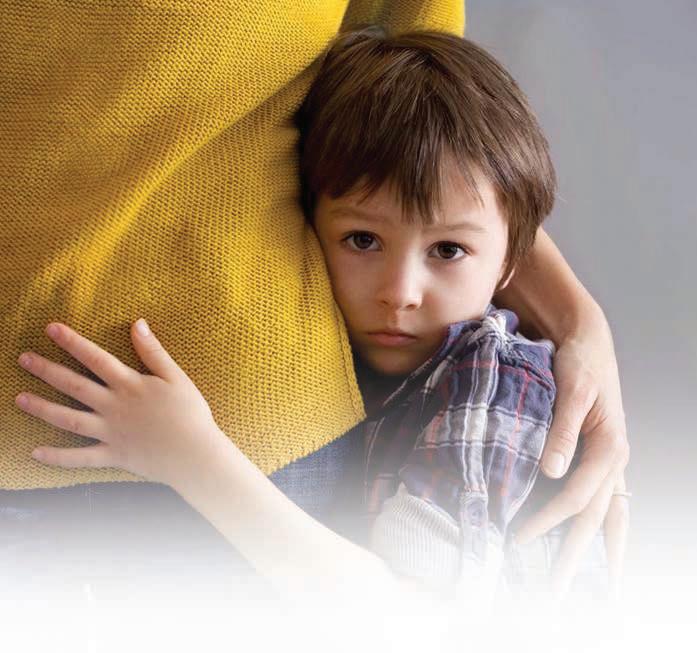
Try some easy and delicious desserts this Passover
JENNIFER STARRETT
When I was growing up, I never loved the dessert options during Passover. Between the canned macaroons and boxed cake mixes that used potato starch, the options really weren’t very impressive. Nothing ever tasted quite as good as desserts during the rest of the year. There were a few exceptions, of course. My grandmother’s cookies — meringues — and cheese pie were always wonderful.
Luckily, over the past few years, new and delicious
COCONUT MACAROONS
I don’t know very many people who are huge fans of the kosher-forPassover coconut macaroons that are found on grocery store shelves this time of year. They may come in a variety of flavors, but they are still uninspiring. However, homemade macaroons are one of my favorite treats during Passover. They are so simple and easy to make, and that makes them even easier to enjoy.
You can also add a variety of items to change up the flavor, including mini chocolate chips, chopped nuts or even sprinkles. The kids love helping me make these, and we all love the sweet, chewy texture of these macaroons.
Ingredients:
12 ounces shredded, unsweetened coconut
1 14-ounce can of sweetened condensed milk
¼ cup almond flour
Additional add-in options: mini chocolate chips, chopped nuts, sprinkles
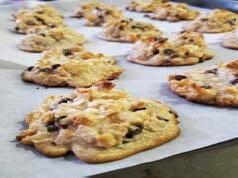
Preheat oven to 350 F and line a baking sheet with parchment paper. In a large bowl, toss the shredded coconut with the almond flour to coat evenly.
Pour in the can of sweetened condensed milk and mix by hand to fully combine ingredients.
If using additional add-ins, mix these in at this point. Form the mixture into round balls and evenly place them about an inch apart on the lined baking sheet. They will spread out a bit when baking.
Cook the macaroons for about 15 minutes until they begin to brown. Let cool completely before removing from the tray. Store in an airtight container at room temperature.
CHOCOLATE TOFFEE MATZAH
Matzah can seem boring and bland, but cover it in caramelized sugar and coat it in chocolate and no one can resist. This recipe is always requested in our family, and the kids have fun helping cover their portions in extra sprinkles, while I enjoy crushed nuts and sea salt. They can be made in advance and frozen until ready to eat, although I have a feeling you’ll have to hide them or end up making a second or third batch.
Ingredients:
About 4 sheets of matzah (enough to fit on one cookie sheet)
½ cup (1 stick) butter or margarine
½ cup brown sugar
12 ounces chocolate chips
Additional add-in options: chopped nuts, sprinkles, sea salt, dried fruit
Preheat oven to 350 F and line a baking sheet with parchment paper. Evenly lay out the sheets of matzah so the entire baking sheet is covered. In a small sauce pan, melt the butter or margarine
kosher-for-Passover recipes have been devised.
The best thing about the three recipes I offer below, is that they don’t take very long to make and have very few ingredients. These are recipes that even the least experienced baker can make. In fact, I let my kids help out when making the coconut macaroons and chocolate toffee matzah, because they are fun to make and require very little effort or measuring of ingredients.
I hope these dessert options help make your Passover an especially sweet one this year. And next year, may we all be together in person!
until completely melted.
Stir in the brown sugar and whisk consistently until thoroughly combined and mixture begins to bubble. Let the mixture continue to heat for about 3 minutes, whisking frequently.
Once caramelized, pour the mixture over the matzah and spread to cover all of the pieces evenly. Place the pan in the oven to cook for 5 minutes.
After 5 minutes, carefully sprinkle on the chocolate chips and tent the tray with aluminum foil to allow the chocolate to begin melting. After about 2 minutes, the chocolate should be heated enough to spread evenly.
Once chocolate is spread, you can add any additional toppings or leave plain. Cool the tray in the refrigerator overnight or in the freezer for about an hour.
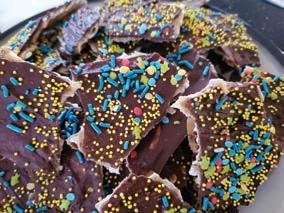
Once cool, you can break the chocolate toffee matzah into pieces and serve.
Store in an airtight container or Ziploc bag in the refrigerator or freezer.
CITRUS ALMOND CAKE
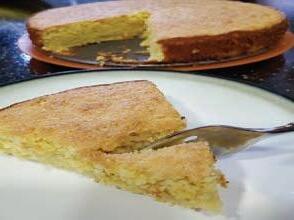
I love the way orange and lemon pair with almond, so when it came to planning my Passover menu this year, I knew I wanted to come up with a light citrus almond cake for dessert. This cake is very easy to make and comes together easily, allowing for less time in the kitchen and more time spent with family during the holiday.
The citrus adds a refreshing taste and sweetness, and the almond and citrus come together to form a perfectly balanced dessert.
Ingredients:
5 eggs, separated
¾ cup and 2 tablespoons white sugar
½ teaspoon salt
1 teaspoon lemon extract
¼ cup orange juice
1½ tablespoons orange zest
2 cups almond flour
Preheat oven to 350 F and coat a 9-inch spring form pan with cooking spray.
Separate the egg whites and yolks into two separate bowls. Add the 2 tablespoons of sugar to the egg whites and beat for about 2 minutes using a stand or hand mixer until thick and white peaks have formed.
In the bowl with egg yolks, add the remaining sugar, salt, lemon extract and orange juice and beat using a stand or hand mixer until completely combined. Mix in the almond flour, one cup at a time until combined and batter is smooth.
Slowly fold in the egg whites to the cake batter. Be sure not to overmix so that the batter remains light and airy.
Once fully combined, pour the batter into the pan and place in the oven. Cook for 30 minutes until a toothpick comes out clean.
Let cool completely before removing pan and serving. JN
12 MARCH 26, 2021 JEWISH NEWS JEWISHAZ.COM SPECIAL SECTION aask-az.org 2320 N 20th St, Phoenix, AZ 85006
care. Use your Arizona Foster Care Tax Credit to direct your state taxes to help Arizona’s children in foster care. AASK has been helping children in foster care find caring families for over 30 years. Help us help them. For more information visit CreditsForKids.org or call 602-930-4665
Jennifer Starrett is an events and marketing consultant. Visit jewphx.com, for more of her recipes and blogs.
PHOTOS BY JENNIFER STARRETT
Recipes for a Passover brunch

FRANCINE COLES
There is nothing that says spring more than fresh asparagus, and when it’s used for this delicious asparagus matzah brei recipe, all is well with my world. There is an age-old question: sweet or savory? Do you prefer your matzah brei with powdered sugar, jam, honey or anything sweet on it or do you like it with some salt and pepper and call it a day?
I’m a savory girl, always have been and
ASPARAGUS MATZAH BREI
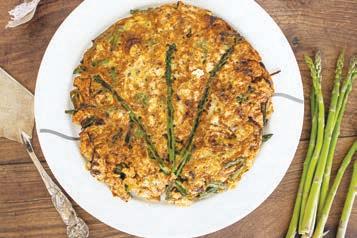
Makes 6 servings
Ingredients:
½ pound thin to medium asparagus plus 3 extra stalks
3 tablespoons unsalted butter or olive oil
1 cup onions, thinly sliced
5 sheets matzah, broken into approximately 2-by-2-inch pieces
6 large eggs, beaten
Kosher salt and freshly ground pepper to taste
Freshly grated Swiss cheese, optional
Snap the ends off of the asparagus where they break naturally. Cut all asparagus except 3 stalks into 1-inch lengths. Set aside the 3 stalks. Steam or boil asparagus until just cooked, about three minutes. If boiling, refresh in a bowl of ice water and then drain. Dry well. Heat 1 tablespoon butter or oil in a large non-stick skillet over medium low heat. Add onions and cook until golden, about 5 minutes. Remove onions from the skillet and combine with the asparagus. Wipe out the skillet.
Meanwhile, place 3 stalks of asparagus on a microwavable plate and microwave for 1 minute.
Soak matzah in a bowl of hot water for about 1 minute. Drain and squeeze as much water out of the matzah as possible and place in a large bowl. Mix the eggs with the matzah. Season with salt and pepper. Stir in the asparagus and onions.
Heat the remaining 2 tablespoons of butter or oil in skillet over medium-high heat. Place the three remaining stalks of asparagus decoratively in the skillet. Carefully add the matzah mixture and cook until the mixture sets on the bottom and around the edges. Holding a large plate over the skillet, flip both the plate and skillet together so that the matzah brei is on the plate. Gently slide it back into the skillet to cook, about 5 minutes. When nicely browned, slide onto serving platter.
Cut into wedges and serve. Total time is 20 minutes.
always will be. So, this recipe is perfect. We’re combining steamed asparagus pieces with sautéed onions, mixing that with beaten eggs and soaked matzah and frying the whole shebang like a frittata. And I threw in an easy and yummy salad recipe as a bonus. It doesn’t get much better than this, as far as I’m concerned. I hope you enjoy these recipes, along with your Passover holiday!
MAPLE-ROASTED CARROT SALAD
Makes 4 Servings for lunch, 6 as a side dish
Ingredients:
2 pounds carrots, preferably with leafy tops
Good olive oil
Kosher salt and freshly ground black pepper
¼ cup pure Grade A maple syrup
⅔ cup dried cranberries
⅔ cup freshly squeezed orange juice (2 oranges)
3 tablespoons sherry wine vinegar

2 garlic cloves, grated on a microplane
6 ounces baby arugula
6 ounces goat cheese, such as Montrachet, medium-diced
⅔ cup roasted, salted marcona almonds
Preheat the oven to 425 F. Trim and scrub the carrots.
If the carrots are more than 1 inch in diameter, cut them in half lengthwise. Cut the carrots in large diagonal slices 1 inch wide by 2 inches long (they will shrink when they roast) and place in a medium bowl with ¼ cup of olive oil, 1 teaspoon salt and ½ teaspoon pepper.
Toss well and transfer to two sheet pans. (If you use just one, they’ll steam instead of roasting.)
Roast for 20 minutes, tossing once, until the carrots are tender. Transfer all the carrots to one of the sheet pans, add the maple syrup, toss and roast for 10 to 15 minutes, until the edges are caramelized. Watch them carefully and toss with a metal spatula and set aside for 10 minutes. Meanwhile, combine the cranberries and orange juice in a small saucepan, bring to a simmer, then set aside for 10 minutes.
In a small bowl, combine the vinegar, garlic and ½ teaspoon salt. Whisk in 3 tablespoons of olive oil. Place the arugula in a large bowl and add the carrots, cranberries (with their liquid), goat cheese, almonds and the vinaigrette.
Toss with large spoons, sprinkle with salt, and serve at room temperature.
Total time is 55 minutes. JN
Francine Coles is a food blogger based in Phoenix. Find more of her food insights at thefancypantskitchen.com. Subscribe for free and receive a complimentary dessert e-book, “Hey Sugar.”
JEWISHAZ.COM JEWISH NEWS MARCH 26, 2021 13 SPECIAL
SECTION
WISHING YOUA PASSOVER Strengthening Jewish life and identity for 80 years. jewishphoenix.org
PASSOVER
SECTION


First person: Passover in far-flung places
PAUL ROCKOWER
Ihave long found Passover to be my favorite holiday because it lends itself to so many different lenses and tangible connections. I have been lucky to spend Passover in a variety of places over the years, and as such I have created many profound memories from these experiences.
I still remember the joy I felt while studying in Israel on Young Judaea Year Course in 1999. I found myself in Jerusalem during Passover, and beamingly thinking to myself at the seder I had finally made it — This year in Jerusalem!
I was so amazed at the way Passover changed the dynamic of life in Israel. I loved the foods that can only be found in Israel, such as the kosher-for-Pesach Big Macs at McDonalds on potato flour buns, the spongy kosherfor-Pesach laffa-wrapped shawarmas in Kikar Dizengoff and the matzah-wrapped deep-fried hot dogs at the kiosks.
Meanwhile, I found it so amusing at the supermarkets that had cordoned off the chametz aisles behind plastic wrap, as if there was some kind of pornography sitting on the shelves.
During part of my junior year abroad in Morocco in 2002, I celebrated the Passover seder in the Moroccan capital Rabat. I was living with a Moroccan Muslim host family, and we had such a fun cultural experience as they tried matzah for the first time. I remember being shocked at how much they liked it. I went on to backpack through the Middle Atlas Mountains that week with a few boxes of matzah stuffed into my day pack, and gave it as a gift to the many villagers I met in my travels.
Years later in 2006, I found myself on a Rotary Fellowship in South Africa during Passover. I was visiting small Afrikaans towns, but managed to find a group Passover seder with the Jews of the area. The power with which Passover lends itself to different lenses became apparent to me, as we discussed the Passover seder through the lens of the struggle against Apartheid, with Nelson Mandela recast as Moses leading his people to freedom.
And again the tactility of Passover played out, as I trekked in the Kruger National Park with boxes of matzah and spent that holiday eating matzah with delicious kudu and impala biltong (dried spiced meat).
One of my favorite matzah memories is from 2007. I was trekking through the Sinai during Passover, on my way to my last stop on a sixmonth trip from Beijing to Cairo. Since it was Pesach, I gave all the Egyptians I met some matzah, and explained to them that it was their fault I was eating this dry cracker — something that elicited lots of chuckles.
One of the things I loved most about being a wandering Jew is how I have been able to adapt the holidays to local realities.
One such example occurred in 2016 when I was studying French in the city of Tours in the Loire Valley. It was a truly happy Passover, because matzah goes wonderfully well with the rich French cheeses and wines. Topping matzah with chèvre and pesto, or with bleu cheese and honey, was definitely a Passover highlight.
The following year offered quite a different Passover experience. I was again in Rabat, Morocco, this time for some cultural diplomacy work in North Africa. Since Passover was approaching, I was looking for a synagogue to make arrangements for the holiday. I made my way through the Medina (old city) and on towards the Mellah (old Jewish quarter).
Eventually I found Avenue Moulay Ismail where the synagogue was located but wasn’t sure about the synagogue’s location. I stopped a man on the street and asked him in Arabic. After exchanging the requisite Moroccan pleasantries and greetings, I got down to business: Where is the mosque for the Jews? He smiled, and pointed to the nondescript building across the street. Bonne fête (Happy Holiday), he said with a smile.
After enjoying the Passover seder services, the next day I procured some matzah for the holiday. I celebrated my Moroccan Passover lunches, with chèvre, a rainbow melange of olives, tuna, golden raisins, juicy dates and fig jam.

It is Passover’s distinctly tangible connections to the change in behavior and diet that makes it such a sensory experience. As such, there are few holidays that offer such a wonderful mechanism of sharing culture and traditions, and adapting the holiday though different flavors and focus.

So as I celebrate this Passover locally here in Phoenix, my Pesach palate still reflects the global tastes I picked up along the way. JN
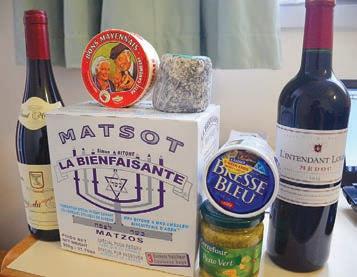
14 MARCH 26, 2021 JEWISH NEWS JEWISHAZ.COM SPECIAL
Paul Rockower is the executive director of the Jewish Community Relations Council of Greater Phoenix.
Phoenix Holocaust Association Invites You to Join Us for a YOM HASHOAH COMMEMORATION Holocaust Education, Inspiring the Next Generation Guest Speaker AZ Rep. Alma Hernandez April 11, 1:00 PM Visit www.phxha.com to RSVP We honor the memory of those who perished in the Holocaust and recognize those who survived. Hear from Holocaust survivors and view a candle-lighting ceremony. Featuring Rabbi Jeremy Schneider of Temple Kol Ami, Cantor Dannah Rubinstein of Congregation Or Tzion, and Shevet Shemesh Israeli Scouts SATURDAY, MARCH 27TH TempeGlendale 480-860-0475623.344.3104 Chandler 480.398.3008 Scottsdale 480.860.0475 PHOENIX 602.710.2910 CH OMPIE S .CO M /PA SSO VER - ME NU Glendale 623.344.3104 Chandler 480.398.3008 Scottsdale 480.860.0475 Phoenix CH OMP I ES CO M /PASS O VER - ME NU PICK UP YO UR PASSOVER DI NN ER TO-GO M ENU View our menus online or in any of our locations Tempe 480.557.0700
PASSOVER
Paul Rockower displays Passover delights that he has enjoyed in myriad locales around the world.
PHOTOS BY PAUL ROCKOWER
Free Haggadot for community facing another Passover in a pandemic
 NICOLE RAZ | STAFF WRITER
NICOLE RAZ | STAFF WRITER
Linda Friedman doesn’t want to do a Passover seder by herself.
“It just won’t be festive,” she said. In case her fear of a solo seder comes to pass, at least she is ready with a Haggadah that she recently picked up from Robin Meyerson, co-director of Project Inspire Arizona and chair of the Shabbos Project Arizona.
Meyerson has been feeling people’s distress. “Passover number two during a global pandemic — who could have imagined that we would be here?” she said.
Meyerson decided to take some action that might inspire people to find joy in the holiday despite the difficulties of the past year. She also realized a lot of people might be celebrating alone. To make things a bit easier for those having a harder time this year, she has been giving away Haggadot all month.
About three years ago, the Phoenix Community Kollel was giving away more than 100 Haggadot and Meyerson immediately picked them up with the idea
of finding people who really needed them. This year especially she has enjoyed being able to help people in this small way.
“It’s been an opportunity to meet people and they are also so excited,” she said. “Haggadahs are expensive!” She has a variety — some are pocket-sized and some are illustrated.
Friedman happened to be at Meyerson’s house for another reason when she learned Meyerson was giving Haggadot away and decided to take one home. To her pleasant surprise, one of the sets Meyerson had is the same one Friedman used growing up.
“I picked mine out from a few because it’s the one I used as a small child, the one I learned on with my family and the one that my school would give out when we were little,” said Friedman, who grew up in a suburb of Detroit, Michigan. Friedman has moved around a lot and hopes to keep this one safe. She wouldn't want to lose it in another move.
Robert Steinhauer received 30 Haggadot from Meyerson, with the




intention of spreading them around, too. “We have a lot of friends that are interested in learning more about Passover,” Steinhauer said, so this year they will host a seder to celebrate the holiday and educate people at the same time.
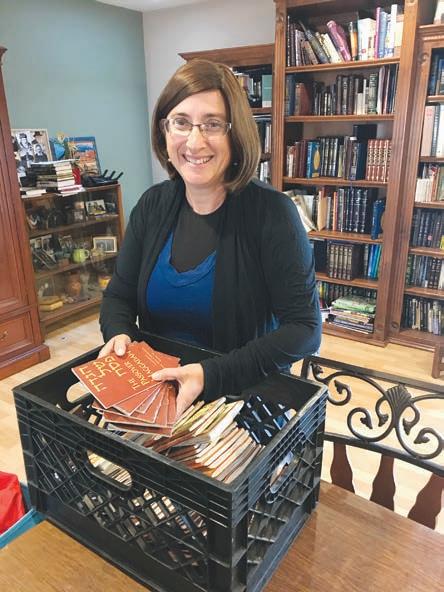

They aren’t sure exactly how many people will come, but “it’s always good to have extra” Haggadot. Guests can take them home in case they know somebody else who needs one.
Meyerson also has some general tips for getting people “in the mood” for the upcoming holiday after living through “our own plague.”
She advises people to spend time thinking and learning about Passover before the big event. That will help build excitement, akin to the anticipation of a wedding, she said — maybe even decorate.

“Seal off all the chametz by closing off the kitchen cabinets with decorated sheets of paper with the 10 plagues,” she said.
And, of course, make sure to have a Haggadah.
“It’s important to me to give them out so people can get used to doing it in their own home,” Meyerson said. “It might seem really overwhelming and scary to do a seder, but when you have a book it just gives you all the instructions.”
Meyerson is happy to see the pile of Haggadot she keeps in a box in her closet dwindling as the holiday approaches.
“They can be kept forever, or they can be shared with others,” she said. “My main goal is that they get used.” JN
JEWISHAZ.COM JEWISH NEWS MARCH 26, 2021 15 SPECIAL SECTION
PASSOVER Visit any of AJ’s 10 Valley Markets ajs nefoods.com Passover Dinners From AJ’s Bistro Visit AJ’s Wine Cellars Ask our experts to assist you with selecting the perfect wines to pair with your meals. Dinners available Saturday, March 27 from 11am to 7pm Please reserve orders of 6 of more by March 24 • Roasted Pistachio Crusted Chicken Breast with Rustic Apple Compote $16.99 per person • Tender Braised Beef Brisket with Natural Root Vegetables Au Jus $18.99 per person • Grilled Salmon served with Herb Carrot Orange Zest $19.99 per person Check with your AJ’s for availability of Potato Pancakes • Matzo Ball Soup • Apple-Nut Charoset • Kugel From The Butcher’s Corner Center-Cut Beef Brisket $8.99 per lb Save $2 per lb Price valid March 12-28, 2021 Complimentary Seder Bones available while supplies last. Ask Delivery!DinnerAbout
Robin Meyerson displays some of the Haggadot she is donating to community members.
Photographer Zion Ozeri showcases Jewish diversity in virtual Haggadah
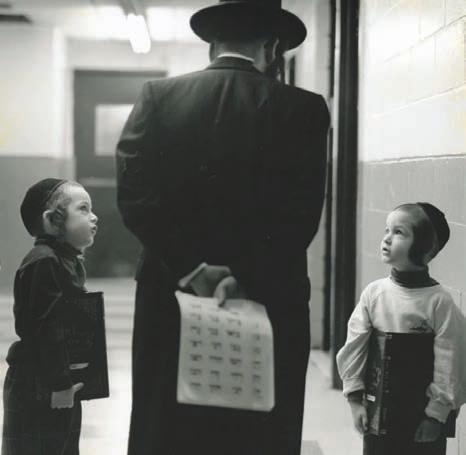 ERIN BEN-MOCHE | JNS.ORG
ERIN BEN-MOCHE | JNS.ORG


Renowned Jewish photographer Zion Ozeri’s award-winning shots have appeared in The New York Times, Newsweek, The Jerusalem Report, Moment and The Economist, to name a few publications. After reviewing his pieces, Ozeri decided to create a virtual interactive Haggadah that highlights the diversity of Jews, just in time for a second pandemic Passover.
Ozeri, along with Sara Wolkenfeld and Josh Feinberg, curated “Pictures Tell: A Passover Haggadah,” a Haggadah that is completely virtual (can be utilized at home or in a classroom) and celebrates the traditions and cultural experiences of the Jewish Diaspora. A major goal of “Pictures Tell” is using imagery to tell the story of the Jewish people, he said.
Ozeri said that each community he has visited — from Europe to Africa and Asia — has its own history and traditions, but that “we have more in common than what separates us, within the Jewish community and beyond.” This theme is integrated into every page of the Haggadah.
“One of the big things I’ve seen this past … two years, [is] this idea of diversity, this idea of ‘who are the Jewish people?’ Most Jews and non-Jews don’t realize that Jews are not just coming from Europe,” said Ozeri. “There are not that many Haggadot showing the diversity of the Jewish people. There is nothing better than just showing people rather than talking about it.”
Along with the traditional prayers and text and the modern photographs, readers will find short entries by contemporary Jewish thinkers — including Rabbi David Wolpe, Rachel Wahba, Rabbi Ammiel Hirsch, Rabba Sara Hurwitz, Dr. Mijal Bitton, Yossi Klein Halevi and Karma Lowe, to name a few. These supplements add another perspective to the rich conversation of Jewish rituals, reflection and diversity. Ozeri also embedded links to multiple melodies of prayers not often popularized at seders to show how tunes vary at seders around the world.

For those looking for separate study sheets to incorporate in classrooms — or the Passover seder itself — study links on Sefaria offer deeper exploration.
Ozeri recently launched the “DiverCity Lens” curriculum and program for public schools, as part of a partnership with the New York City Department of Education.
This initiative adds to his existing Jewish Lens project, which helps students around the world conceptualize Judaism and Jewish history through photography.
Ozeri is passionate about teaching students about visual storytelling because it’s an easy way for them to relate in history and retain information. He wanted to bring the same elements into his Haggadah so young Jews were engaged throughout the seder. “It’s more engaging when you see modern photographs,” he said. “We read [the text] every year, and it can get a little dry, but with photographs,
especially with kids, the imagery triggers a conversation. It’s easier with an image.”
Ozeri found that photos were compelling when used in lecturing college students. A few months ago, Ozeri was asked to speak virtually in front of a group of students studying for their master’s at Columbia University. During Ozeri’s lecture, he displayed pictures of Jews from around the world to show how diverse the Jewish people are. The response from the students not only surprised Ozeri but also inspired him to create this Haggadah for all ages and all religions.
“The responses from the Zoom [lecture chat] were amazing. Most of the comments were, ‘Oh I didn’t realize there are Black Jews and Brown Jews, Jews in Asia and India.’ I expected Jews to know about this and even they don’t.”
During the pandemic, Ozeri realized how many around the globe used their time in quarantine to learn about their family history and those similar and different to them. He said that pictures and films taken from a phone or computer made it possible to stay connected and educated in a time of isolation.
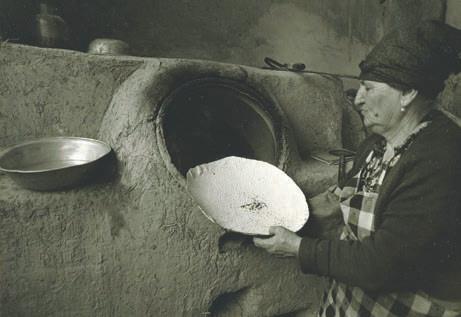
He hopes his images help others learn about the diversity of Jews and deepen conversations about the Passover story. While Ozeri plans to use this Haggadah at his virtual seder this year, he would eventually like to have a printed version so he can have it for his own children.
Whether virtual or in-person, through his curricula or individual photographs, Ozeri’s work, much like Judaism, aims to teach Jews about their history in an insightful way. These are the lessons and pictures children remember and pass down from generation to generation. It isn’t a coincidence that the cover of Ozeri’s Haggadah features a grandfather and grandson sitting together reading Torah.
“Photographs can also tell a story. It’s a language we are using more and more,” he said. “All we [want to] do [is] pass something to the next generation. … It’s about education and passing the torch. That is really one of the most important things in Judaism. This is our responsibility.” JN
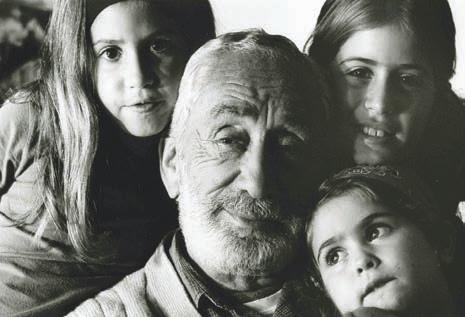
16 MARCH 26, 2021 JEWISH NEWS JEWISHAZ.COM SPECIAL SECTION
“Pictures Tell: A Passover Haggadah” is available for free online. This article was first published in the Jewish Journal.
PASSOVER
Holocaust survivor, Buenos Aires, Argentina
PHOTO COURTESY OF ZION OZERI
Williamsburg, New York
PHOTO COURTESY OF ZION OZERI
Matzah oven, Bukhara, Uzbekistan
PHOTO COURTESY OF ZION OZERI
First person: Eating for health at Passover
 LINDA ENGER
LINDA ENGER









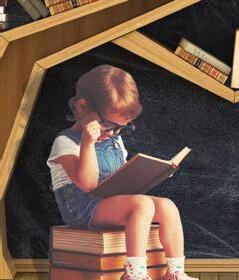

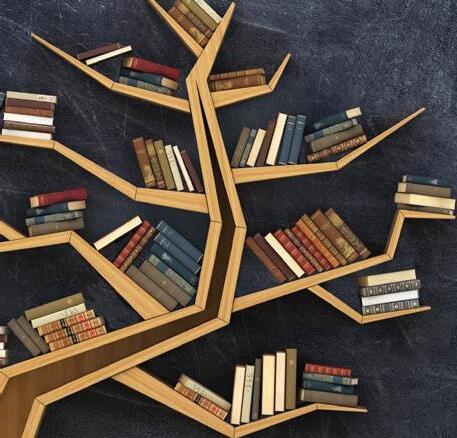
Ididn’t really know how good fresh vegetables could taste except when I experienced fresh romaine lettuce at my bubbe’s seder. I grew up in a home that was much more oriented towards canned vegetables, but fresh ones are a key ingredient in my cooking and my lifestyle now — not only at Passover. Yet, it was this holiday that introduced the concept to me, and I am grateful for that memory of huge romaine leaves.
Real food as a tool for health is a big part of my life. I have spent many years researching and experimenting with various anti-inflammation, low-carb, no-sugar, elimination and low fodmap diets to learn how to control diabetes, various food sensitivities and intolerances and other health conditions. When I add in the vegan/vegetarian vs. Paleo/Keto debates, it can ramp up my anxiety level around eating. And figuring it out while managing kosher-for-Passover product availability and cost — Oy! It’s a lot, but it doesn’t have to overwhelm you. The best answer I have found is mindful eating and meal planning. I am not a vegetarian or vegan anymore, but if you are avoiding kitnyot, dairy and all animal products this Passover, my recommendation is you do so without living off sugar. Keep
in mind that this body is the only body you will have. Love it and be nice to it so it will be nice to you.

While we reflect on our ancestors’ escape from Egypt, we don’t have to be slaves to an old way of eating. Luckily, Passover food choices and availability have greatly expanded. It’s no longer a given that the holiday diet is based on meat, matzah and Passover cake mixes.
Over the years of having a variety of guests at our seder, I learned that if a meal has lots of healthy choices, no one should walk away hungry or frustrated with their dining experience. Ideally, everything in sight is something most everyone can eat. I understand people can have an emotional response to food. Maybe the jelly fruit slices were the highlight of the seder for you as a kid. But as a recovered sugar addict, I can honestly say the emotional strength it takes to keep kosher is a great mindset to tap into if you want to get off or drastically reduce your sugar intake.
This Passover I will go through my folder of recipes and try to rework them with gluten-free, sugar-free and low-carb food sensitivities in mind. I will utilize as much as I can from my garden. For my low-carb Passover deserts, I will use almond flour, coconut flour, tapioca flour, fruit, kosher-
for-Passover stevia and some raw honey. Through hands-on experience with my father-in-law, I am very aware that diabetes can be drastically controlled through a low-carb diet. This will be the second Passover since he passed away, and I don’t have to keep a strict diabetic and low-carb meal plan. But it has truly become our style of eating. My husband and I still chuckle when we think of the year my father-in-law was hyper-focused — in his Alzheimer’s way — on the orange on the seder plate. “Isn’t anyone going to eat that?” he repeated over and over.
When it comes to Passover, I want lots of homemade food that is reminiscent of positive memories of my past while still being healthy.
I love lots of variety with greens both raw and cooked. This year the green leaves of my garlic have become a major addition to my cooking. Hopefully, I will have more from my garden for the seder plate. The nasturtium leaves with their flowers will be a nice addition. Bolting arugula and mizuna lettuce will be sharp tasting, like mustard, so it should be a perfect variation as well as symbolic for the seder.
Food sensitivities affect people in so many ways and often go undiagnosed. Passover can be taken as a time to throw caution to
the wind and regret it later. But this is a time for renewal. We are lucky to live here where produce is fresh and abundant. It is an ideal time to try some healthy options and see what happens.
This is our second Passover during COVID, and as my mother used to say, “This too shall pass.” Whatever you choose to cook and eat I hope you have a very healthy, meaningful and mindful Passover. JN

Linda Enger is an artist working in different mediums, a sustainable gardener, a foodie and a healthy lifestyle advocate. Follow her on Instagram @dirtodelicious or contact her at Linda@lindaengerphoto.com.
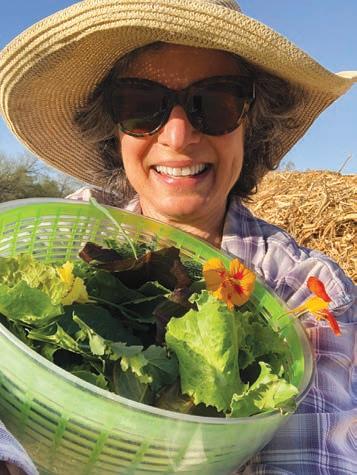
JEWISHAZ.COM JEWISH NEWS MARCH 26, 2021 17
SPECIAL SECTION PASSOVER YEARS
Linda Enger holding up produce from her garden. PHOTO COURTESY OF LINDA ENGER
Strategies to combat Passover loneliness
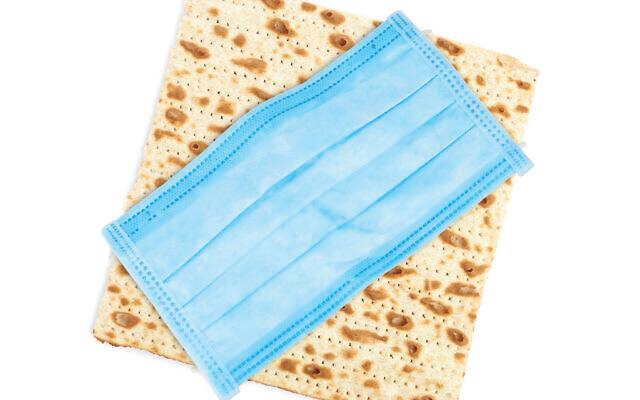 SHANNON LEVITT | MANAGING EDITOR AND ADAM REINHERZ | CONTRIBUTING WRITER
SHANNON LEVITT | MANAGING EDITOR AND ADAM REINHERZ | CONTRIBUTING WRITER
As increasing numbers of people get vaccinated, pre-pandemic behavior is becoming more common. Still, Passover will be challenging for some this year, whether because they haven’t been vaccinated, they’re unable to travel or they’ll be separated from family and friends.
Jennifer Brauner, director of Jewish Family & Children’s Service’s Senior Enrichment Center in Phoenix, was worried that many of her senior participants would be alone on Passover. She told them about JFCS’ Passover food drive thinking some might have need of it. Instead, many seniors offered to help and to donate.
Brauner is confident anyone with a concern about being alone would reach out to her, and said the fact that nobody has is a positive sign. “Maybe it has something to do with the fact people are getting vaccinated and they feel more comfortable getting together with families,” she said.
She also sees the Center’s Zoom offerings as a silver lining of the pandemic. Zoom has allowed seniors to come together and connect with others who are living alone, especially around holidays.
“It’s a beautiful thing,” she said. They enjoy greeting one another on Zoom, and “they’ve built relationships.” While last year Zoom seemed alien and even frightening, seniors now feel more confident and are able to use it to enjoy the holiday.
Amy Gold, a social worker and information and referral specialist at AgeWell at Pittsburgh, Pennsylvania’s Jewish Community Center, has also been talking to seniors about Passover strategies.
Along with encouraging people to contact their doctors about personal health concerns and review CDC guidelines, Gold promotes pre-holiday communication.
“Every individual and family has their own comfort level,” she said.
Questions concerning mask wearing, hugging and distancing can be addressed well before breaking the middle matzah. Some families may decide that another year of Zooming or outdoor visits is the best approach, continued Gold. “We just need to remember that our older adults are especially vulnerable and you have to weigh the risk and the benefit of being alone or gathering,” she said.
Jack Silver, the director of training and Jewish
counseling for JFCS in Phoenix, said that while people are expressing more anxiety and more loneliness than before, he’s been heartened by people’s resilience. “If you’d asked me a year ago about this,” he said, “I would have had a much more bleak outlook, and I would have predicted more drastic problems.”
Still, he acknowledged that as social animals, “being disconnected from people, especially older people, can be deleterious to psychological and physical health.” But seniors have adjusted to the new reality, and a holiday like Passover is likely more surmountable this year than last, he said.
Rabbi Dovid Small has been thinking about the impact of isolation this Passover. As director of pastoral care at the Jewish Association on Aging in Pittsburgh, Small is organizing a model seder for residents and staff prior to the holiday’s start. He hopes to record the event so it’s accessible for later viewing.

“One of the most important things is connection,” said Small. Whether it’s a phone call or delivery of a food item, “some sort of connection makes the holiday more meaningful.”
Reaching out yields mutual benefits and reflects a
theme of the holiday, he continued: “Passover is a time of personal freedom, and finding that personal freedom in your own life, leaving Egypt in your own life, I think it’s special when we can share that with people who are special in our own lives.”
For some seniors, this Passover comes after a year of tremendous loss, and that more than anything will shape the holiday.

Janet Arnold Rees, senior concierge and creative aging coordinator for JFCS in Phoenix, has lost two brothers over the course of the last three months, and though she’s “the family seder person,” this year, she’s not up to the appellation. “I’m just coming up out of the swamp,” she said, via email.
Still, her family is going to try to set up a Zoom seder. “Passover has always been special, and last year we were a bit blind-sided and didn’t do anything,” she said. Even with the losses they’ve experienced, the family wants some semblance of a celebration.
Her brother who passed away last week was always responsible for “corny Passover jokes he would find to start out each of our seders,” she said. “We loved rolling our eyes at him — but we all remember how fun they were.” He had been leading the seders for the last few decades and now “we’ve passed the leadership down to the next generation.”
And when thinking of people who are facing the holiday alone, Stefanie Small, director of clinical services at JFCS in Pittsburgh, suggested people offer them a safe option.
“Reach out and invite someone to sit on your porch with you,” said Small. “Maybe sing some seder songs during the day. Nobody says that all of those have to be done at night.”
With proper planning, popular holiday foods, like chocolate matzah, can be enjoyed by people outdoors together.
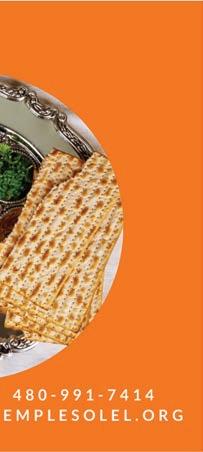
So much of Passover is about hope and freedom, said Small. “We’re still not past the restrictions of the pandemic, but with all of the vaccinations and all of the knowledge — the medical knowledge — we’ve gained, we have hope for the future. We’re not in our normal situations, but this holiday can be a beacon of hope of what is yet to come.” JN
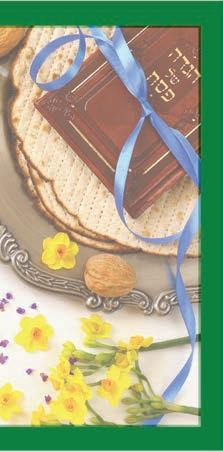
18 MARCH 26, 2021 JEWISH NEWS JEWISHAZ.COM SPECIAL SECTION
PASSOVER
Adam Reinherz is a staff writer for Pittsburgh Jewish Chronicle, a Jewish News-affiliated publication.
IMAGE BY LIUDMILA CHERNETSKA VIA ISTOCKPHOTO.COM
4 cups of wine, 9 choices for Passover
ELYSE GENDERSON
Each Passover, the list of fine kosher wine seems to get longer. The customary four cups of wine during the seder allows for variety and sharing during the celebration. If you’re looking to branch out from your old standbys here are nine recommendations. Some of these gems will be shared at my family’s table this Passover holiday:


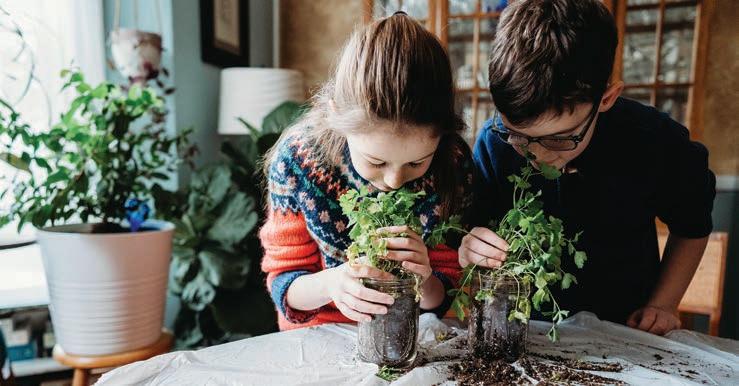
2016 Herzog Russian River Chardonnay (kosher)







This bold and rich chardonnay was fermented and aged for 15 months in a blend of French and American oak barrels. A rich, full texture with aromas and flavors of vanilla and toast.
The terroir of Sonoma County’s Russian River Valley shines through, adding flavors of tropical fruits like mango in addition to lemon, apple and pear flavors. Pair it with roasted turkey.
2016 Tulip Just Cabernet (kosher)
From the Upper Galilee in Israel this deep garnet-colored wine offers aromas of red cherry, black pepper spice, blackberry and cocoa. Espresso and blueberry flavors burst from the glass. Full-bodied with a long luxurious finish. Pair with slow roasted brisket.
2016 Tulip White (kosher)
A blend of two aromatic grapes, gewurztraminer and sauvignon blanc, this floral and complex white wine is just stunning. Tropical fruit flavors of lychee, pineapple and grapefruit are balanced by white peppercorn spice. Bright, fresh acidity lifts the pronounced fruit flavors. Pair with ceviche and spicy Asian dishes or enjoy as an aperitif.
2014 Teperberg Essence Malbec (kosher)
Essence Malbec comes from fruit from the Ayalon Valley which has a high diurnal shift in day to night temperature swings. This allows the fruit to ripen fully while retaining acidity. This bold malbec shows off pronounced aromas and flavors of blackberry, blackcurrant, violets and black pepper. The delightfully firm tannins balance the bold fruit.
2016 Teperberg Impression Cabernet Sauvignon (kosher)
Deep garnet in color, this full-bodied cabernet offers a decadent bouquet of red cherries, blackberries, blueberries, dried herbs and garrigue. Pair with a hearty steak.
2017 Teperberg Impression Chardonnay (kosher)
A wonderfully full-bodied chardonnay with a luxurious creamy texture. Aromas and flavors of ripe red apple, prickly pear, lemon rind and toasted almonds. A long and decadent finish. Pair with roasted chicken or matzah ball soup.
2017 Terra Vega Sauvignon Blanc (kosher)
A crisp, aromatic and juicy Chilean sauvignon blanc. Bright and tart citrus and tropical fruit flavors shine. Pair with white flaky fish.
2019 Terra Vega Merlot (kosher)
Incredible value! This fruity and opulent merlot shows off the Chilean terroir. Ripe plummy aromas and flavors of black cherry and baking spice are balanced by juicy acidity and soft tannins.
2014 Alexander Sandro (kosher)
Alexander Sandro is made at the Alexander Winery at Moshav Beit Yitzhak in the Hefer Valley near Netanya. The fruit for this wine comes from the northern Galilee region and it is a blend of cabernet sauvignon, merlot, with a touch of sauvignon blanc. Very expressive with aromas and flavors of ripe black cherries and red plums with supple, silky tannins. JN
Will you walk alongside the 570 individuals and families in Greater Phoenix who have committed to supporting a strong Jewish future?
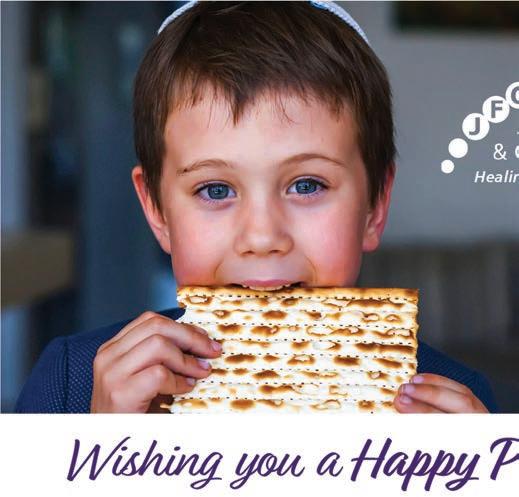
Contact: Rachel Rabinovich, Director of Special Projects/Legacy Program Director rrabinovich@jcfphoenix.org • jcfphoenix.org
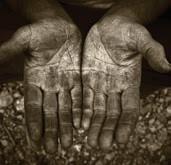
Be remembered forever by Jewish Community Foundation of Greater Phoenix with a gift in your will, trust, retirement account, or life insurance policy.



JEWISHAZ.COM JEWISH NEWS MARCH 26, 2021 19
SPECIAL
PASSOVER
SECTION
Elyse Genderson is the vice president of Schneider’s of Capitol Hill, in Washington, D.C. This article first appeared in Washington Jewish Week, a Jewish News-affiliated publication.
Our German-made Passover seder plates
MENDEL HOROWITZ
Storytelling is a central feature of the Passover holiday. The imperative for Jews to retell our history assures that our children will never forget it.
During the Holocaust, traditional Passover seder texts were handwritten in ghettos from memory. Survivors illustrated Holocaustthemed Haggadahs in displaced persons camps after the war. “In every generation, they stand above us to destroy us,” laments the traditional narrator, “and the Holy One, blessed be He, rescues us from their hands.”
To accompany the familiar narrative, on our Passover table, heirlooms link my children tangibly to their past. Incorporating their material objects into our rituals is both an homage to our ancestors’ determination and a prayer for the perpetuation of their faith.
Ideally, we can meet the bearable challenges of our times by appreciating how our predecessors confronted the unbearable difficulties of theirs. In a time of uncertainty and inconvenient isolation, these relics can help to put social distancing in perspective and encourage us to maintain resilience and hope.
As the coronavirus spread in March 2020, my daughter and I transported an heirloom set of Rosenthal china in two overweight carry-ons and one bulging knapsack on a flight to Israel from New York. Before escaping the carnage of Europe for the United States in 1949, Zaidy Victor and Bubby Bella had the presence of mind to purchase quality German china manufactured in the U.S. Zone. Traumatized in ways I could not imagine, these two refugees made their way to Philadelphia with two young children and enough plates and saucers for a family of 12.
Wrapped snugly in bubble-wrap cocoons, the delicate gold-rimmed dishes were making their second transatlantic journey. In an honoring of the past, we were transporting the relics to a sovereign Jewish state after survivors of genocide salvaged them from a country that had sought their annihilation. Symbols of perseverance and desire, the dishes would adorn our Passover table in Jerusalem,
and remind us how, from ugliness, beauty can be reclaimed.
In ordinary times, the tableware might have become a sentimental curiosity. During the pandemic, the artifacts take on more significance.
While the history of anti-Semitism is unmistakable, without overt persecution, the hyperboles of Passover can ring flat. During the pandemic, when the danger is indiscriminate and viral, fear and uncertainty resonate more loudly.
While the coronavirus pandemic is no Holocaust, dramatizing the Passover narrative is tempting. How is this Passover night different? With the threat of infection on every doorpost and disappointment spread widely like a plague, like last year, on this Passover night, few things will feel the same.
On a typical Passover, orchestrating an enjoyable seder can be challenging. Rituals can seem tiresome. Not every participant is attentive to the text. During a precautionary lockdown — as was imposed almost everywhere in the world last Passover — the challenge is magnified.
Last year, men and women who ordinarily conducted seders with many guests and/
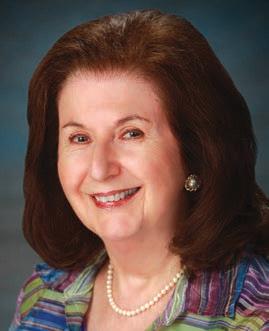

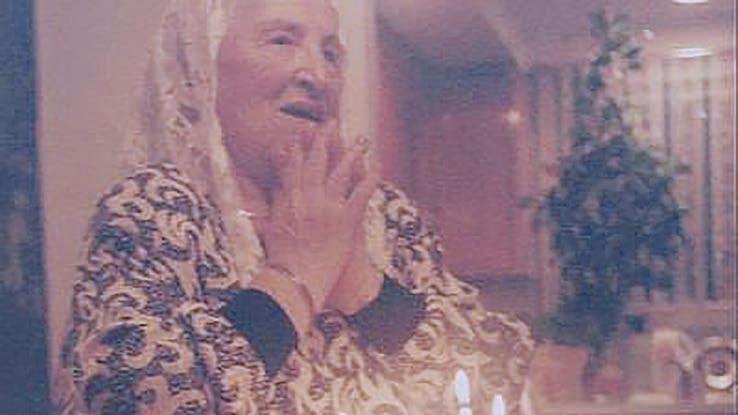


or extended family members found themselves virtually alone. This year in certain communities in the Diaspora, on March 27, the eve of the holiday which is routinely boisterous and observed in groups will again need to be reimagined and observed more intimately. (In Israel, the restrictions imposed on seders in 2020 are being lifted.)
With fewer guests to indulge and less extended family to engage with, the festival looms strangely. Individuals who have seldom prepared a holiday meal will be tasked to produce meaningful feasts. Parents will isolate themselves from children and children from parents. Communities will still be grieving. The circumstances call for improvisation and some families are more resourceful than the next.
I think of Passover during the Holocaust and other periods of terror and confusion. At a time when celebrating might have seemed naive, some Jewish fugitives found fortitude in ceremonies. Others had the idealism and faith to peer ahead.

While vaccinations are bringing hope, the coronavirus is still menacing. When my enthusiasm for the holiday wavers, I can check myself against the courage of
my predecessors. When my foreboding whispers, I can set the holiday table and channel the enthusiasm of those grandparents who saw more hardship than I could know and persevered.
After liberation, Zaidy Victor and Bubbe Bella took refuge in the Foehrenwald Displaced Persons camp in Germany with their son, Mendel. Their lives as Polish Hasidim had become suddenly extinct. In a short time, the resolute couple would birth a daughter, Rifka, and make their way to a New World.
Alone and defiant, the small family would begin life anew in a Golden Land. Like those Jews who fled the first holocaust of Pharaoh millennia ago, the fugitives would never look back.
I cannot imagine the wartime atrocities or the foresight necessary to purchase dinnerware in the aftermath of genocide. The Rosenthal china was a physical reminder of what was lost and of what could be had.
Zaidy and Bubbe would bring their resourcefulness to Philadelphia, where, with strength and ingenuity, they would add succeeding chapters to their tale.
The coronavirus pandemic is not a world war, and contemporary challenges are trivial in contrast to our grandparents’ travails. Still, in these volatile, uncertain, complex and ambiguous times, I can remind myself that personal contributions matter.
After taking necessary health precautions, my family and I will adorn our seder table with antique china and other nostalgic adornments. From wine-stained Haggadot, we will recount time-honored stories and add to them our family’s ordeal. And in the spirit of our great ancestors, we will demonstrate that the foundation of survival is both devotion and the optimism to believe that better days lie ahead. JN
20 MARCH 26, 2021 JEWISH NEWS JEWISHAZ.COM SPECIAL SECTION
PASSOVER Chag Sameach from the Board of Rabbis of Greater Phoenix Rabbi
• phoenixBOR @ gmail.com May you and your family have a joyous Pesach
Mendel Horowitz, a psychotherapist, is working on a book about Orthodox Jewish men, group therapy and faith. This article first appeared on JNS.org.
Stephen Kahn, President
Bella Rubinstein, Passover 1995.
Toby Weinstein
Full service Real Estate needs, including property management I will make your next real estate transaction pleasant, productive, and profitable. Bus (480) 948-5554 • Cell (602) 228-0265 Tobyre4u@aol.com 7077 E. Marilyn Rd., Bldg. 4, Ste 130 Scottsdale, AZ All Real Estate Agents Are Not Alike! Happy Passover!
PHOTO COURTESY OF JNS.ORG
Broker Associate




























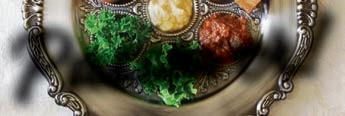









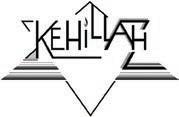
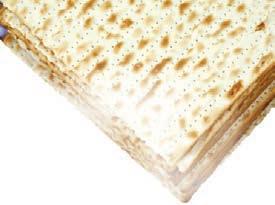



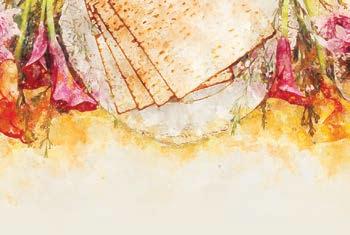
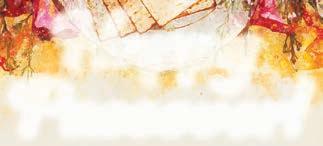

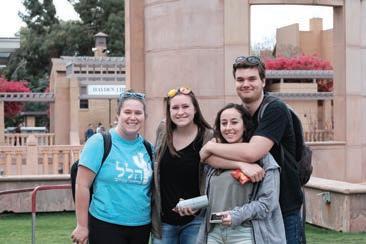








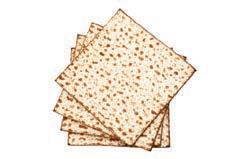


JEWISHAZ.COM JEWISH NEWS MARCH 26, 2021 21 SPECIAL SECTION Happy Passover 602-241-7870 www.azjhs.org Happy Passover “Building Skylines Since 1955” Happy Passover www.lane-nach.com LANE & NACH, P.C. Happy Passover! Happy Passover! North Valley JewisH Community AssociatioN in Anthem 623-256-0658 from Gary Kravetz | Costco Team FLEET DIRECTOR RIGHT HONDA (PLATINUM LEVEL 3 YEARS IN A ROW) & LEASE RETENTION MANAGER FOR QUESTIONS AND ANSWERS? 7875 E FRANK LLOYD WRIGHT BLVD • SCOTTSDALE, AZ 85260 480-778-2510 DIRECT LINE • 602-722-8006 CELL • GKRAVETZ@RIGHTHONDA.COM HAPPY Passover! WWW.BETHAMITEMPLE.ORG 5858 E Dynamite Blvd, Cave Creek 602-369-7667 • info@congregationkehillah.org www.congregationkehillah.org The community is invited to join us for Yizkor Service Sunday, April 4th at 10:00 a.m. Email info@congregationkehillah.org to sign up and receive the Zoom link. Happy Passover! Allison L. Kierman 14362 N. Frank Lloyd Wright Blvd., Ste. 1000 • Scottsdale, AZ 85260 480.719.7333 • www.kiermanlaw.com akierman@kiermanlaw.com Martin Keller, Ed.D., ABPP, FAACP 602-996-8619 | psychologistscottsdale.com 11020 North Tatum Blvd. | Phoenix, AZ 85028 Happy Passover! Happy Passover Attorneys, Mediators & Counselors Our Business is Your Peace of Mind hymson goldstein pantiliat & lohr Arizona 14500 N. Northsight Blvd., Suite 101 Scottsdale, Arizona 85260 480-991-9077 Real Estate | Business | Personal Injury | Litigation Bankruptcy | Estate Planning | Intellectual Property New York 525 Chestnut Street, Suite 203 Cedarhurst, New York 11516 516-596-8366 www.scottsdale-lawyer.com JEWISH WAR VETERANS OF SCOTTSDALE POST 210 | 623-256-0658 Happy Passover from Best Wishes for a Happy Passover! arizona.adl.org Happy Passover! goodmans.com Best Wishes for a Happy Passover www.jcrcphoenix.org jcrcphoenix JCRC_Phoenix חמס חספ גח
Israeli TV show ‘The Attaché’ excels at misdirection
Chief among the many odd choices made by the creators of “The Attaché,” an Israeli dramatic series from the producers of “Shtisel,” is the show’s title.
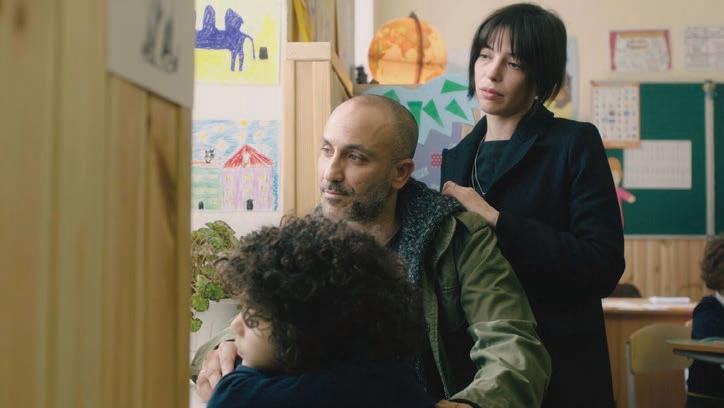

“The Attaché,” available now with English subtitles on Acorn TV, is not a political drama, nor a diplomatic farce. The title might suggest a workplace comedy-drama or an action-packed spy show. At the very least, it would suggest that the attaché herself would be the main character. Even the title sequence suggests a fast-paced thriller.
But “The Attaché” is none of those things, and the attaché, Annabelle Cohen (Héloïse Godet), is the show’s secondary focus. Eli Ben David, who created, wrote and directed the 10-episode first season, also stars as Annabelle’s husband, Avshalom. It is with Avshalom, the attaché’s husband, that “The Attaché” spends most of its time.
“The Attaché” is a show about a fraying marriage, a fish-out-of-water tale that builds in suspense and leaves you concerned with the fate of its principal characters. Will they stay in Paris past Annabelle’s one-year fellowship as the aliyah attaché in the Israeli embassy? Can their marriage survive the decision?
The chemistry between Ben David and Godet is enough to sustain everything on its own. The setting is beautiful, and the writers tackle vital questions in Hebrew, French, Arabic and English. What slows everything down are the thematic feints, beginning with that misdirection of a title: half-gestures toward ideas, plotlines and people that aren’t fully explored.
“The Attaché” tells the story of Annabelle and Avshalom, an Israeli couple that moves to Paris for one year with their young son, Uri (Ilay Lax). Annabelle, a native, is delighted to be home, nearer to her family than she’s been in years, and with an eye toward making the move permanent. Avshalom, a successful musician back in Israel, is sullen and depressed in his new country, unable to pick up the language, without much to do besides dither on the piano at a
synagogue that he loathes and pine for his old life. His uncertain place is felt most acutely in the aftermath of a terrorist attack, when his dark skin and inability to speak French leads to his violent arrest. While Avshalom is being thrown in jail, his wife and family are being protected by imposing French-Israeli bodyguards; thus,
Avshalom can speak Arabic, but not French; vice versa for Annabelle.
They’re able to split the difference, less push-and-pull than give-and-take. Avshalom goes to buy a tuxedo for an embassy event when Annabelle asks him to, and he refers to their be-sandaled wedding. It works.
Still, brazen elders like Annabelle’s parents (Florence Bloch and Patrick Braoudé) and a foul-mouthed Algerian-Jewish bigot that they invite for dinner (JeanLouis Tribes) aren’t shy about pointing out the possibly irreconcilable differences that Annabelle and Avshalom can’t or won’t acknowledge.
She grows suspicious of Avshalom’s Arab friend, a cafe owner named Said (Karim Saidi), after the terrorist attack, and Avshalom seems to have it out for a young refugee brought to dinner by Annabelle’s parents. Avshalom is protective of his even darker-skinned father, Ovadya (Gabi Amrani), who himself displays callous cruelty toward Arabs.
All of this produces knotty questions of race, ethnicity and class that give the show some weight.
the tone is set for their respective relationships to their new home.
The terrorist attack and its aftermath are based on the 2015 Bataclan killings, and Ben David has said that the series is partially based on his experience living in France around that time. However, by the end of the third episode, Avshalom’s paranoia regarding the arrest and the attacks are more or less dropped.
Annabelle is a budding diplomat of Ashkenazi stock, the daughter of wealthy, philanthropic, etiquette-minded snobs; Avshalom is a Metallica-underwear-wearing musician of Moroccan descent, and his father displays a coarseness that his counterparts barely tolerate.
Avshalom and Annabelle fight and make up, then repeat. There’s a heart attack, a false pregnancy, a hospitalized parent, a lost child, two thefts, strained friendships, two dramatic firings, near-infidelities, tense dinners, a racist attack by a far-right gang and a bizarre political stunt by a far-left group. It’s a lot of drama for 10 30-minute episodes, and the accumulation of store-brand narrative tricks blend some of the episodes together.
But a fine score and quick-cut editing keeps things from dragging too much and, in the end, “The Attaché” is worth the price of admission. It’s a small, compelling story about a couple’s struggle to adapt to their new home, however saddled with over-the-top dramatic ballast it may be. JN
22 MARCH 26, 2021 JEWISH NEWS JEWISHAZ.COM LIFESTYLE & CULTURE TV REVIEW
Jesse Bernstein is a staff writer at Jewish Exponent, a Jewish Newsaffiliated publication.
From left: Uri (Ilay Lax), Avshalom (Elie Ben-David) and Annabelle (Héloïse Godet) star as an Israeli family spending a year in Israel in “The Attaché” COURTESY OF ACORN TV
JESSE BERNSTEIN | CONTRIBUTING WRITER
COURTESY OF ACORN TV
Elie Ben-David plays Avshalom in “The Attaché,” the show he created, wrote and directed.
Reviews: New books by Marc Lamont Hill, Mitchill Plitnick, Menachem Kaiser
“Except for Palestine: The Limits of Progressive Politics”
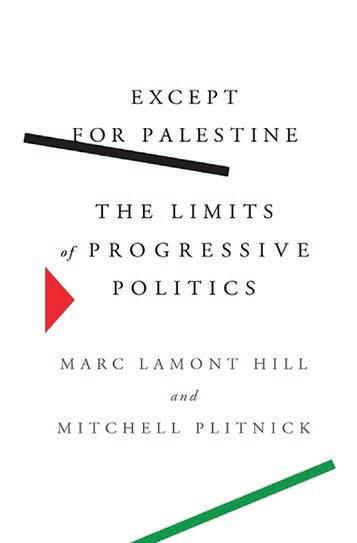
rights of Palestinians abroad?
Marc Lamont
Hill and Mitchell Plitnick
The New Press
“Except for Palestine” is a muddled, confusing book.
Marc Lamont Hill, a professor at Temple University, and Mitchell Plitnick, co-director of Jewish Voice for Peace, seem to have written the book before they knew exactly what they wanted to accomplish. The book’s introduction and conclusion both read as if they were tacked on as an afterthought, as the book’s chapters often have no bearing on or relevance to the main claim.
“Except for Palestine,” in its promotional copy, promises to be “a searing polemic and cri de coeur for elected officials, activists and everyday citizens alike to align their beliefs and politics with their values.” The authors say they seek to explore why mainstream American liberals seem reluctant to apply the humanistic values that they claim to hold dear to the plight of the Palestinians. They wonder: Why would those whose impulse is to support the rights of the downtrodden at home not take seriously the
“Plunder: A Memoir of Family Property and Nazi Treasure”
Menachem Kaiser
Houghton Mifflin Harcourt
What distinguishes memorabilia from curios, or either category from treasure? What’s the difference between plunder, spoils and mementos? How do we unpack something that is at once fetish object, family heirloom, sacred relic and despicable artifact?
Menachem Kaiser does not claim to have the answers to these questions — one of the many delightful things about his new memoir, “Plunder” — but he’s willing to ask them of himself and of you.
Kaiser’s story about his attempt to reclaim a Polish apartment building that was expropriated from his grandfather prior to the Holocaust is a fascinating tale. His commitment to ambiguity, along with a keen sense of story, genre and the weight of expectations, makes for a compelling read.

Kaiser, a magazine writer, understands that the story he’s written will be read by
The problem is that the authors don’t make a serious attempt to answer these questions or even substantiate the book’s central claim: that progressives exceptionalize Palestine. The only evidence they present are the actions of some Democrats in Congress in recent years and a few unsourced assertions about apathy and silence.
There’s no attempt to grapple with what made support for Israel a rallying point for large portions of the left for many years. And there’s a long history of the term “Progressive Except Palestine” on the British left, an exploration of which might have provided some useful context; this goes unmentioned.
The book, instead, is a retelling of the story of contemporary Israel and U.S. support for its ascendant right wing, which makes for a weird dissonance between what the authors claim to be arguing and the actual words between the covers.
In the meat of the book, the authors consistently dodge chances to make the case for specific points.
How can an argument decrying the end of U.S. aid to the United Nations Relief and Works Agency for Palestine Refugees in the Near East interact so
readers who have encountered many such variations before, and that those readers have ideas about how these stories should go. So he’s weary of “dancing my stupid nostalgia dance,” of taking a “memorysafari” where he’d treat readers to some preordained emotional journey that didn’t really belong to him.
Though he never says it directly, Kaiser is writing an “American-Jew-returnsto-the-old-country-for-family-but-alsopersonal-growth” story in the world that Jonathan Safran Foer created, and there’s a readership to be won by sticking to the basics.
It’s easy to see why Kaiser once felt inclined to write this book as a novel: There’s his pink velour tracksuit-wearing Polish lawyer nicknamed The Killer, bizarre and seemingly anti-Semitic questions from reactionary Polish judges, a massive network of treasure-hunting conspiracy theorists with ideas about a secret underground Nazi train, mistaken identities and long-dormant familial strife brought back into the light.
But he went with a memoir, which makes the absurdities, strange coincidences
superficially with the objections made to its continued existence?
How can the authors argue that the Israeli government unfairly stonewalled Yasser Arafat during negotiations without saying why they believe the government’s objections were incorrect?
How can they assert Hamas “showed flexibility” following its ascension to power in Gaza without detailing this flexibility?
How can they make the serious claim that Israel had a hand in the creation of its “bad neighborhood,” as the region is often called, and devote only one line to the government’s treatment of the Palestinians?
This is all bad argumentation.
It’s not as if they’re not capable of solid rhetoric. When Hill and Plitnick discuss the criminalization and stigmatization of the boycott, divestment and sanctions movement in this country, or the despicable treatment of Jews and nonJews alike who deviate from the received wisdom on Israel and Palestine, they use facts to back up their arguments.
Those are points with the moral power to persuade. But given their relatively small place in the larger argument, it’s hard to say that persuasion was really the goal here.
and trajectory-changing twists more compelling. Kaiser writes as if he’s speaking aloud, like a stranger telling you a surprisingly interesting story on a night you didn’t expect to be out so late.
He builds his narrative with reporting, memory, poetry, court transcripts, legal documents and memoir, and never fails to treat the people he encounters with humanity on the page, even if he had contemplated less noble actions in the reality he recounts. His friends and colleagues provide substantive objections to the ethical nature of his reclamation project, and Kaiser’s responses may or may not convince you.
There are long digressions on the nature of conspiracy theories, especially as they relate to Nazis and the occult, and vignettes that illustrate the curious, semimystical status of the region in Poland where the story takes place. Every place he found to dig with purpose and respect, Kaiser grabbed a shovel, and “Plunder” is better off for it. JN
Jesse Bernstein is a staff writer for Jewish Exponent, a Jewish News-affiliated publication.
JEWISHAZ.COM JEWISH NEWS MARCH 26, 2021 23 LIFESTYLE & CULTURE BOOK REVIEW
BERNSTEIN
JESSE
| CONTRIBUTING WRITER
PHOTO COURTESY OF MENACHEM KAISER PHOTO COURTESY OF THE NEW PRESS
Featured Event
MONDAY, APRIL 5
Meet the Author: 6:30 p.m. “Outlander,” a book and Netflix series, focuses on 20th-century British nurse Claire Randall who time travels to 18th-century Scotland and finds adventure and romance with the dashing Highland warrior Jamie Fraser. Join local author, Diana Gabaldon, as she discusses her historical series, which has sold over 25 million copies worldwide and become a Netflix sensation. Event will be outside and socially distanced. Cost: $10 for Martin Pear Jewish Community Center members, $15 for guests. For more information and to register, visit jewishphoenix.regfox.com/meet-the-authors-series.

Events
SUNDAY, MARCH 28
Community Passover Seder: 6:30 p.m. Chabad of Mesa is hosting an outdoor seder. Cost: $30 for adults, $10 for children. To reserve your spot, visit chabadmesa.com/seder. For more information, call 480-659-7001.
TUESDAY, APRIL 27
JBox Delivery. The East Valley JCC will deliver kosher meals for East Valley residents in need. The deadline to sign up for a meal is Tuesday, April 20.
Virtual Meetings, Lectures & Classes
TUESDAY, MARCH 30
Lady in Gold: 11 a.m.-noon. Thanks to the 2015 movie “Woman in Gold,” the portrait of Viennese socialite Adele Bloch-Bauer painted by Gustav Klimt in 1907, has become famous. Learn the stories the painting tells via Zoom. Cost: Free. For more information, visit seniorcenter@jfcsaz.org.
THURSDAY, APRIL 1
Sounds of Spring rain: 11 a.m. Tune in to hear pianist Nicole Pesce play a series of songs in her program “It’s All about Rain.” Cost: Free. For more information and to register, visit jfcsaz.org/cse or contact seniorcenter@jfcsaz.org.
Discover Paris: 1:30 p.m. Karen Rudel, from Sight Seekers Delight, will lead you to discover Paris. Whether it’s your first or 100th time in Paris, you will learn new stories, delights and hidden treasures. Cost: Free. For more information and to register, visit jfcsaz.org/cse or contact seniorcenter@jfcsaz.org.
MONDAY, APRIL 5
Latin Dance: 11 a.m. Michelle Dionisio teaches basic Latin dances like the merengue, mambo salsa, cha-cha and more for a fun dance workout on Zoom. For more information and to register, visit jfcsaz.org/cse or contact seniorcenter@jfcsaz.org.
Little Chefs: 3 p.m., East Valley JCC. Chef Melinda McNeil will demonstrate how to make Yom Ha’atzmaut cupcakes in this prerecorded cooking class for children (accompanied by an adult). Cost: Free. For more information and to register, visit evjcc.org/littlechefs.
TUESDAY, APRIL 6
Swift Shakespeare: 11 a.m. Learn all things Shakespeare: his life, his works, and his world. The class is an acting and history lesson disguised as a comedic play. Cost: Free. For more information and to register, visit jfcsaz.org/cse or contact seniorcenter@jfcsaz.org.
In the Kitchen with Chef Melinda: 7 p.m. Chef Melinda McNeil demonstrates Yom Ha’atzmaut recipes in this virtual class hosted by the East Valley JCC. FCost: Free. For more information and to register, visit evjcc.org/littlechefs.
Antiquity: 7 p.m. The canonic sources of Judaism—the Bible, the Mishnah, the Talmud, and the Midrashim—were generated roughly between
1200 BCE to 500 CE. This ASU Jewish Studies webinar explores how new scholarship on ancient archeology, literature, and social organization helps us to understand the treasures of the Jewish tradition. Cost: Free. For more information and to register, visit jewishstudies.asu.edu/ jewishstudiestoday.
THURSDAY, APRIL 8
Looking to the skies: 11 a.m. How does an artist attempt to capture a subject which is as ever changing and vast as the sky? Journey across time and across the globe in this fascinating exploration into the variety of ways an artist responds to and interprets the sky. Cost: Free. For more information and to register, visit jfcsaz.org/ cse or contact seniorcenter@jfcsaz.org.
Virtual live tours of Auschwitz: 1-3 p.m. or 7-9 p.m. In commemoration of Yom Hashoah, the Center for Holocaust Education at the East Valley JCC offers a virtual tour of the concentration camp led by a professional tour guide live from Poland. Cost: $30. Space is limited. For more information and to register, visit evjcc.org/ auschwitz-tour.
SUNDAY, APRIL 11
Yom Ha’atzmaut celebration : 3-5 p.m. East Valley JCC at Espee Park, 450 E. Knox Road, Chandler. Live music, children’s activities, donate toiletries and make cards for soldiers. Bring a picnic, EVJCC will supply dessert. Register by April 7, at evjcc.org/yom-haatzmaut.
All-Star Yom Ha’atzmaut Celebration: 6 p.m. Celebrate Israel with an all-star concert produced by Jewish Rock Radio and presented by the East Valley JCC. The concert features Rick Recht, David Broza, Nefesh Mountain, Rabbi Josh Warshawsky, Laurie Akers, Rabbi Lisa Silverstein, teens and college students singing in Israel and special guest leaders. Cost: Free. Register to receive the Zoom link at evjcc.org/yom-haatzmaut.
Take this Job: 2 p.m. Temple Chai has selected the short play “Take this Job” that explores issues of aging to be performed live on Zoom. For more information and to register, visit bevival.com/ events-1/take-this-job.
MONDAY, APRIL 12
Mothers in the Bible: 10 a.m. Hadassah Tikvah West Valley will host Jewish educator Andre Ivory for a Zoom presentation about mothers in the bible. To get the Zoom link and for more information, call 623-252-3161 or email tikvahwestvalley@yahoo.com.
TUESDAY APRIL 13
Musical Instrument Museum: 1:30 p.m. Learn about the traditions and celebrations of Klezmer music via Zoom. Cost: Free. For more information and to register, visit jfcsaz.org/cse or contact seniorcenter@jfcsaz.org.
Blast from the Past: 11 am. Arizona’s Hip Historian Marshall Shore will explore 1963. Cost: Free. For more information and to register, visit jfcsaz.org/ cse or contact seniorcenter@jfcsaz.org.
Medieval/Early Modern Judaism: 7 p.m. During the middle ages (500-1500) and the early-modern period (1500-1800) Judaism greatly evolved to generate the masterpieces of biblical exegesis, jurisprudence, philosophy, mysticism, poetry, and liturgy. This ASU Jewish Studies webinar explores how new studies of the interplay between Jews and non-Jews transformed our understanding of Jewish history and the history of Judaism. Cost: Free. For more information and to register, visit jewishstudies.asu.edu/jewishstudiestoday.
THURSDAY, APRIL 15
SUN LAKES SISTERHOOD: 1 p.m. At Sisterhood of the Sun Lakes Jewish Congregation’s next meeting, see the latest Spring fashions during a virtual fashion show with clothing and accessories by JudyWear via Zoom. Sisterhood members will receive an email with the link. Cost: Free. For more information, call Carol Biales at 480-895-3168 or Janey Burnice at 480-895-4815.
LUNCH AND LEARN: 11 a.m. In this Herberger Theater Lunch Time Theater, Karen Burns invites us into her life--from an overly dramatic childhood spent in leg braces, to a narrow escape from the Golden State Killer, to the glamorous life onstage at Radio CityMusic Hall and back again to leg braces. Cost: Free. For more information and to register, visit jfcsaz.org/cse or contact seniorcenter@jfcsaz.org.
Yom Haazmaut with the Klezmer Band Zaftig: 6:30-7:30 p.m. The musicians of Zaftig have played together for over 25 years throughout the Southwest, sharing their love of Klezmer music as it speaks to the Jewish soul. Join us outside at The J as we celebrate Israel’s Independence Day with a candlelight concert. Cost: $25 for members, $36 for guests. For more information or to register, visit apm.activecommunities.com/ valleyofthesunjcc/Activity_Search/1764.
FRIDAY, APRIL 16
Holocaust Survivors Speaker Series: 10 a.m. The Arizona Jewish Historical Society will host a virtual presentation by Oskar Knoblauch. Learn about his survival story and how he has left a legacy for future generations including his inspiring autobiography, “A Boy’s Story, A Man’s Memory – Surviving the Holocaust 1933-1945.” Cost: Free. RSVP to afusco@azjhs.org.
SUNDAY, APRIL 18
Israeli Film Series: East Valley JCC will host a daylong streaming of “The 90-Minute War,” a sharp-edged political mockumentary about the century of intractable conflict between Israel and Palestine being settled once and for all … on the soccer field. Cost: Free. Registration is required. Visit evjcc.org/film.
Ethics of Our Fathers: 7 p.m. Learn with Rabbi Zalman Levertov online. Tune in at: bit. ly/2Y0wdgv. Cost: Free. For more information, visit chabadaz.com.
Quotable Quotes by our Sages: 7 p.m. Learn with Rabbi Shlomy Levertov online. Tune in at: JewishParadiseValley.com/class. Cost: Free. For more information, visit chabadaz.com.
Learning to Trust in God: 7:30 p.m. Learn with Rabbi Yossi Friedman online. Tune in at: ChabadAZ.com/LiveClass. Cost: Free. For more information, visit chabadaz.com.
Torah & Tea: 7:30 p.m. Learn with Rabbi Yossie Shemtov online. Cost: Free. For more information, visit Facebook.com/ChabadTucson.
MONDAYS, APRIL 5-MAY 24
Welcome to Judaism: 5 p.m. This introductory Bureau of Jewish Education course provides a foundation in the basic tenets of Judaism. The class is open to non-Jews, non-Jews and their Jewish partners and Jewish adults interested in further exploring Judaism. Cost: $50. For more information and to register, visit bjephoenix.org/ courses/available-courses.
TUESDAYS
Keep Calm and Play Mahjong: 6:30-8:30 p.m. Play mahjong from home with myjongg.net. Cost: Free. To join a table, email Nicole at nicoleg@vosjcc.org.
Maintaining an Upbeat Attitude: 7 p.m. A class exclusively for people in their 20s and 30s, learn how Jewish Mysticism can help with your attitude with Rabbi Shlomy Levertov online. Cost: Free. Tune in at: JewishParadiseValley.com/YJPclass. For more information, visit chabadaz.com.
39 Ways to Repair the World: In celebration of Rabbi Shmuly’s 39th birthday, he is teaching the 39 melachot over the year (1 per week for 39 weeks). Each session will be between 15-20 minutes long on Tuesdays. Cost: Suggested $18 donation. For more information, visit valleybeitmidrash.org.
TUESDAYS, JAN. 12 - MAY 25
Introduction to Judaism: 7-9 p.m. Learn the basics of Judaism with Rabbi Stein Kokin. For more information or to register, visit bethelphoenix.com/adult-education.
WEDNESDAYS
Happiness Hour: 11:30 a.m. An online class taught by Rabbi Pinchas Allouche that delves into texts and references culled from our traditions to address a relevant topic and draw uplifting life lessons from it. For more information or to join, visit cbtvirtualworld.com.
The Thirteen Petalled Rose: 1 p.m. An online Kabbalah class that studies “The Thirteen Petalled Rose” by Rabbi Adin Even-Israel Steinsaltz, focusing on the many foundational and transformational concepts of Kabbalah and Jewish Mysticism and applying them to everyday life. For more information or to join, visit cbtvirtualworld.com.
JACS: 7:30-8:30 p.m. Virtual support group for Jewish alcoholics, addicts and their friends and family on the first and third Wednesdays of the month. Cost: Free. For more information, email jacsarizona@gmail.com or call 602-692-1004.
Torah Studies: Noon. Take a weekly journey to the soul of Torah online with Rabbi Yossi Levertov. Cost: Free. For more information, visit chabadaz.com
24 MARCH 26, 2021 JEWISH NEWS JEWISHAZ.COM CALENDAR
The book cover of “Outlander” by Diana Gabaldon IMAGE COURTESY OF DIANA GABALDON
Knit a Mitzvah: 1-3 p.m. On the second and fourth Wednesdays of the month, check in with fellow knitters who are making items to donate as part of this Brandeis National Committee Phoenix chapter study group. For more information, contact Ronee Siegel at ronees@aol.com.
WEDNESDAYS, APRIL 7-28
The Jews of American Jazz: 10 a.m. In this fourweek virtual class, examine the lives, careers, and music of a slew of great Jewish-American jazz legends. Topics covered include: Benny Goodman and the genesis of the Swing Era, clarinetist Artie Shaw and black stride pianist Willie “The Lion” Smith and more. In partnership with The JCC of Greater Baltimore/The Gordon Center. Cost: $100 for 4 classes. For more information and to register, visit apm.activecommunities.com/ valleyofthesunjcc/Activity_Search/1734.
WEDNESDAYS, FEB. 3 - APRIL 7
The Lights of Rav Kook: 11 a.m. Learn the foundational roots of Rabbi Avraham Yitzchak HaCohen Kook’s teachings and the soaring winds of his vision. Cost: $18. For more information, visit valleybeitmidrash.org.
WEDNESDAYS, MARCH 31-JUNE 30
Scottsdale Society of Women Writers: 6 p.m. Scottsdale Society of Women Writers gives members access to events of interest, a format for exchanging ideas, an opportunity to network with other women writers and authors, and more. The group meets virtually on the last Wednesday of each month with a professional speaker presentation. Cost: Free for members, and free for first and second-time guests. RSVP is required to get the Zoom information. To RSVP and for more information, text or email Patricia Brooks at 480-250-5556 or at patricia@plbrooks.com.
THURSDAYS
Ladies Torah & Tea: 10:30 a.m. Learn about the women of the Torah with Mrs. Leah Levertov online. Cost: Free. Tune in at: ourjewishcenter. com/virtual. For more information, visit chabadaz.com.
Talmud - Maakos: 11 a.m. Learn with Rabbi Shlomy Levertov. Cost: Free. Tune in at: JewishParadiseValley.com/YJPclass. For more information, visit chabadaz.com.
Teen Discussions: 7-8:30 p.m. Learn with Rabbi Tzvi Rimler online, Cost: Free. Tune in at: thtps:// cteen.clickmeeting.com/east-valley. For more information, visit chabadaz.com.


Mindfulness Gatherings: Noon. Hosted by Hospice of the Valley via Zoom. Cost: Free. To join by phone dial 1-253-215-8782, meeting ID 486 920 2119#, to get the Zoom link or for further questions contact Gill Hamilton at ghamilton@ hov.org or 602-748-3692.
FRIDAYS, MARCH 12-MAY 14
Wise Aging: 11:30 a.m.-1 p.m. A Bureau of Jewish Phoenix course designed specifically to meet the social, emotional and spiritual needs of Jewish seekers entering second adulthood. Explore the tools and resources to age wisely through the lens of Jewish wisdom. Learn positive ways to navigate a meaningful transition to your next chapter on life’s journey. $130. For more information or to register, visit bjephoenix.org.
SATURDAYS
Saturday Mindfulness Gatherings: 9:30 a.m. Hosted by Hospice of the Valley. To join by phone dial 1-253-215-8782, meeting ID 486 920 2119#. To get the Zoom link or for more information, contact Gill Hamilton at ghamilton@hov.org or 602-748-3692.
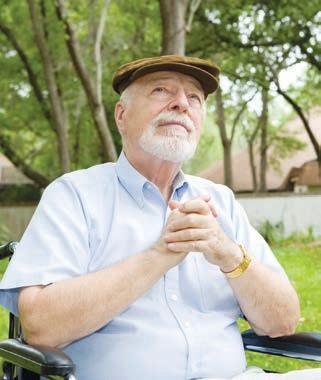
SUNDAYS
Soul Study: 7:15 a.m. An online class exploring the secrets of the Tanya and Jewish mysticism, taught by Rabbi Pinchas Allouche. Cost: Free. Passover Q&A: 7:30 p.m. Have a question related to Passover? Ask it here with Rabbi Mendy Levertov. Cost: Free. Tune in using this
link: ourjewishcenter.com/virtual. For more information, visit chabadaz.com.
Jewish War Veterans Post 210: 10 a.m. Any active duty service member or veteran is welcome to join monthly meetings, now virtual, every third Sunday, Cost: Free. For more information, email Michael Chambers at c365michael@yahoo.com.
Shabbat
FRIDAYS
Erev Shabbat Service: 5:30 p.m. Rabbi Alicia Magal will lead a service livstreamed for members of the Jewish Community of Sedona and the Verde Valley. Cost: Free. For more information and to obtain the Zoom link, visit jcsvv.org/contact.
Welcome Shabbat: 11-11:45 a.m. Join the JFCS Virtual Center for Senior Enrichment each Friday for a soothing and inspiring program to welcome Shabbat. Each week a different guest host will lead the program with song and celebration. Cost: Free. For more information, visit jfcsaz.org/cse.
EVERY THIRD FRIDAY, JAN. 15-DEC. 31
Third Friday Shabbat: 7- 8 p.m. The Desert Foothills Jewish Community Association hosts a virtual abbreviated Shabbat service followed by a program. Contact Andrea at 480-664-8847 for more information.
Seniors
MONDAYS
Dance Fusion with Michele Dionisio: 11 a.m.-noon. Presented by JFCS Center for Senior Enrichment. Cost: Free. For more information, visit jfcsaz.org/cse.
Featured Presentation: 12:30 p.m. Join Smile on Seniors Mondays and Wednesdays to learn from a variety of presenters about topical issues, like Q&As with medical professionals, entertainers and lectures. Cost: Free. For full details visit sosaz.org/virtual or email Rabbi Levi Levertov at levi@sosaz.org.
TUESDAYS
Brain Games with Friends: 2-3 p.m. Challenge your brains while having fun. Experts believe that active learning helps maintain brain health by preventing loss of cognitive skills such as memory, reasoning and judgment. For more information or to register, visit vosjcc.org/j-at-home-adults.
Movie Discussion Group: 11 a.m. Join Smile on Seniors on the third Tuesday of every month hosted by Issy Lifshitz. Cost: Free. For full details and the movie of the month visit sosaz.org/virtual or email Rabbi Levi Levertov at levi@sosaz.org.
WEDNESDAYS
Chair Yoga with Zoe: 11-11:45 a.m. A guided class in yoga without having to get down on the floor. Presented by JFCS Center for Senior Enrichment. Cost: Free. For more information, visit jfcsaz.org/ cse.
THURSDAYS
In the Kitchen with Benita: 12:30 p.m. Join Smile on Seniors on the fourth Thursday of every month for some delicious cooking or baking fun! Cost: Free. For full details visit sosaz.org/virtual or email Rabbi Levi Levertov at levi@sosaz.org.
FRIDAYS
Adult Chair Ballet Class: Noon-12:45 p.m. Join Jennifer Cafarella and Elaine Seretis from Ballet Theatre of Phoenix as they teach a ballet class that will help improve strength, flexibility, movement and balance. No prior dance experience required. Presented by the JFCS Virtual Center for Senior Enrichment. Cost: Free. For more information, visit jfcsaz.org/cse.
Musical Friday: 12:30 p.m. Join Smile on Seniors on the first Friday of every month for a musical presentation. Cost: Free. For full details visit sosaz.org/virtual or email Rabbi Levi Levertov at levi@sosaz.org. JN
Upcoming Special Sections
Senior Lifestyle
April 2
From home health aides to financial planners, independent living facilities to nursing homes, this is the perfect venue to showcase how your business can help older Jewish residents navigate these challenging times.
Camp & School Guide
April 16
Parents are making decisions for next summer and next year now! Showcase your offerings to Jewish News readers. JEWISHAZ.COM
Bar/Bat Mitzvah Planner
April 16
Ideas and resources for families planning celebrations or B’nai Mitzvot. Don’t miss the opportunity to highlight your products and services for events that take several years to plan.
JEWISHAZ.COM JEWISH NEWS MARCH 26, 2021 25 CALENDAR
REACH HIGHLY EDUCATED, AFFLUENT READERS IN THE VALLEY
Contact your sales consultant to schedule your advertising at jlipson@jewishaz.com
Print | Digital | Target over 42,500 Jewish readers with a mix of print and digital.
Poke bowl and mocktails
Chabad at Arizona State University gave students a night of fun since they missed having a normal spring break.
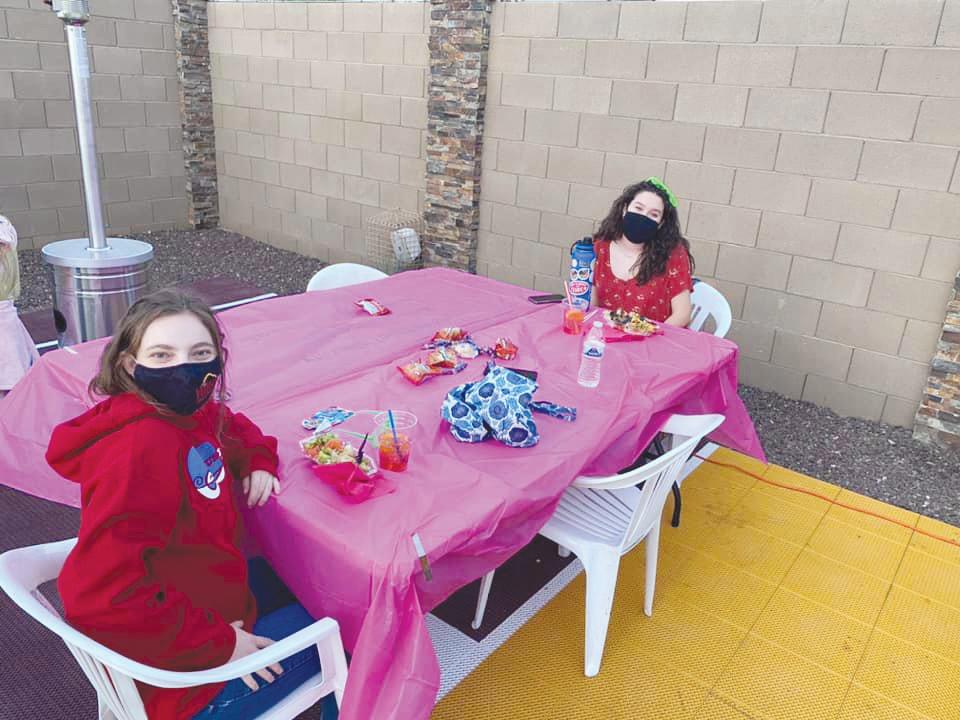
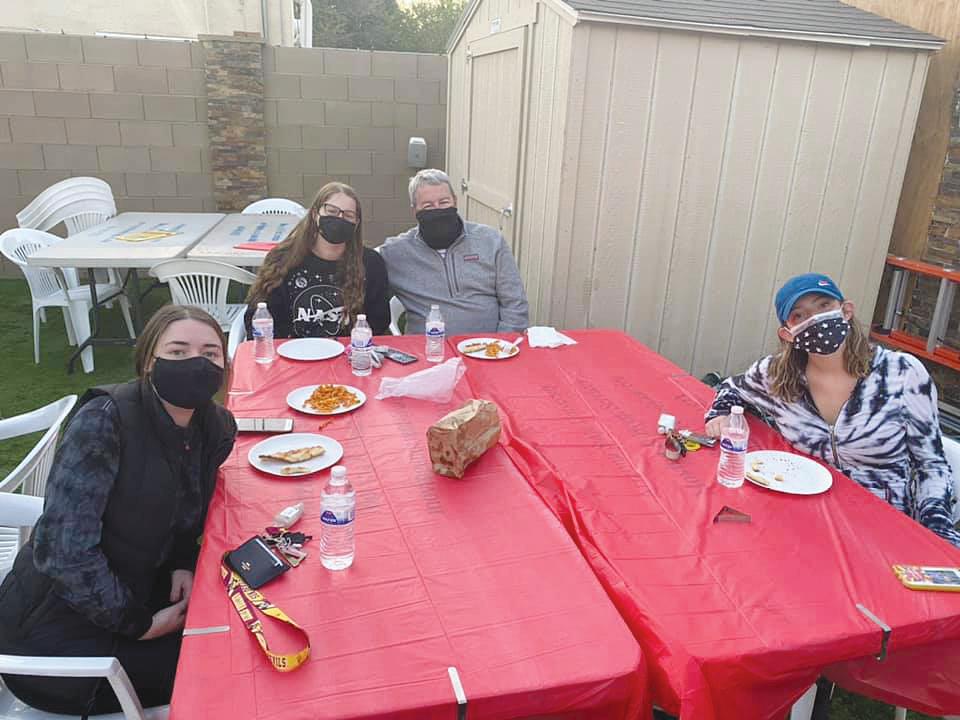
Shabbat to go
ASU students pick up Shabbat dinners at Hillel and celebrate with a picnic. PHOTO COURTESY OF HILLEL JEWISH STUDENT CENTER AT ASU
Picnic with poke bowls
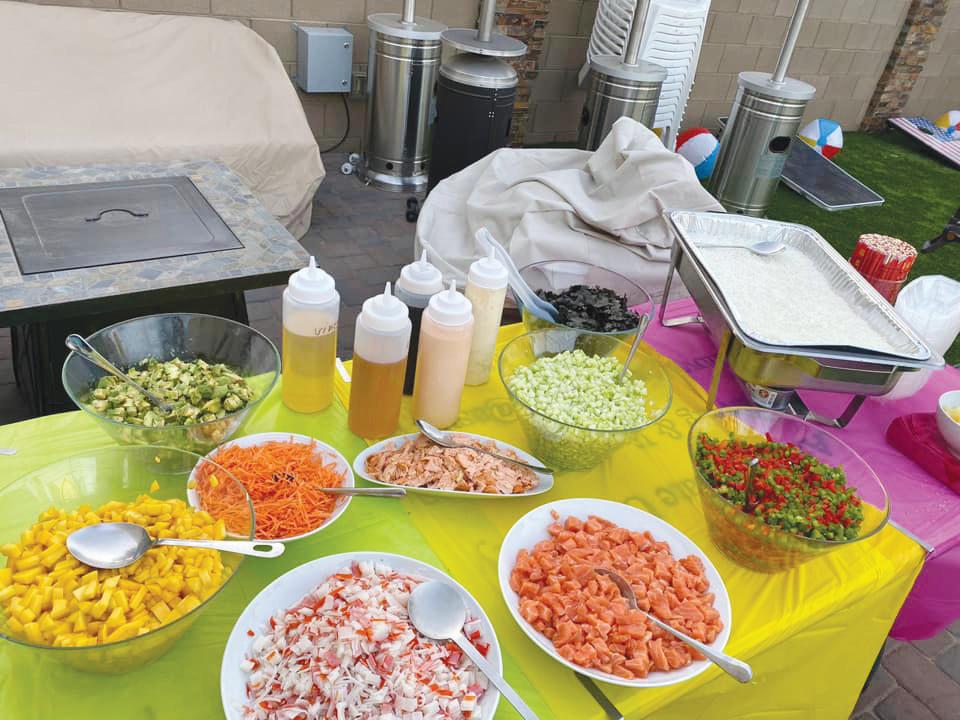
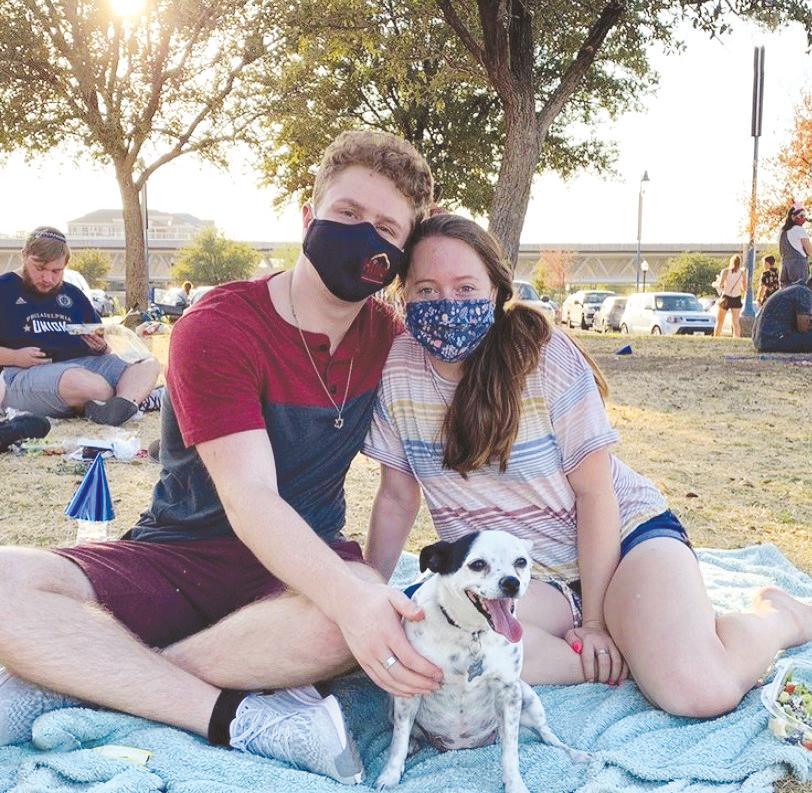
Strike a yoga pose
Hillel at ASU students practice yoga to reduce stress caused by missing spring break.
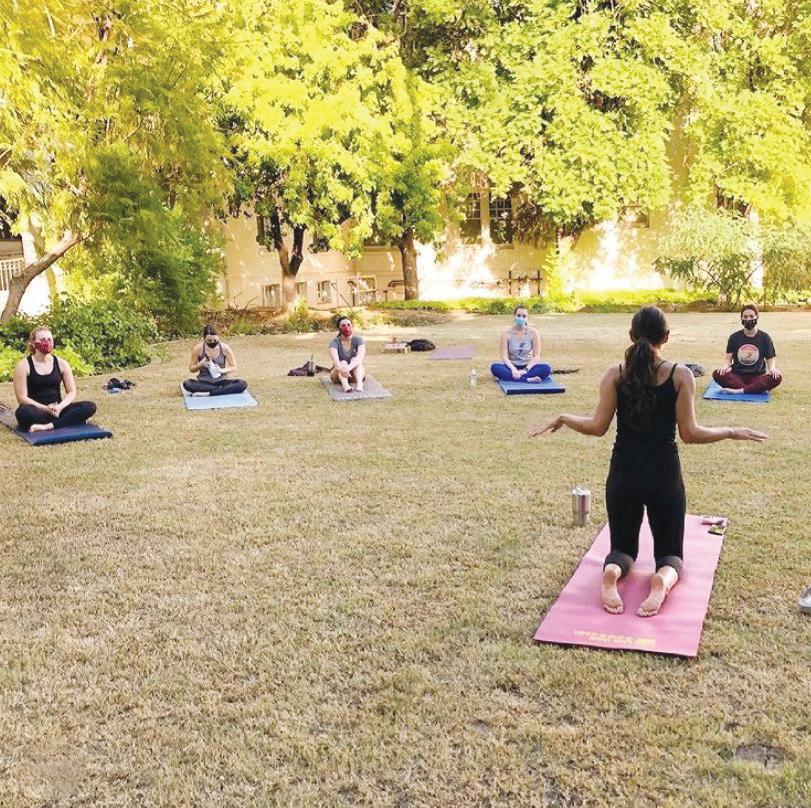
COURTESY OF HILLEL JEWISH STUDENT CENTER AT ASU
This COMMUNITY page features photos of community members around the Valley and the world. Submit photos and details each week to editor@jewishaz.com by 10 a.m. Monday.
Relax, even without spring break
26 MARCH 26, 2021 JEWISH NEWS JEWISHAZ.COM COMMUNITY
PHOTO
PHOTO BY RABBI SHMUEL TIECHTEL
Clockwise from left: Shayna Rosenstein, Jordyn Neiman, Jason Neiman and Bella Schneider sit back and relax with poke bowls and mocktails at Chabad at ASU.
PHOTO BY RABBI SHMUEL TIECHTEL
Katya Cohen, left, and Ellie Fern, right, enjoy some good food and fun in lieu of spring break at Chabad at ASU.
PHOTO BY RABBI SHMUEL TIECHTEL
WRITER CONTINUED FROM PAGE 8
“With my best manners I say, ‘May I have a polka, please?’ Her forehead creases. She looks over at Mr. Winkler then back at me. I don’t even know I’m speaking Yiddish. ‘What?’ I try again. ‘Well, a fleagle is fine, too.’ Mrs. Winkler looks at me like I’ve fallen off a spaceship and even Weenie Weenie Winkler, Linda’s nerdy brother, is suppressing laughter. I realize that I’d been boobytrapped by my parents. I don’t even know the English words for chicken leg or wing. My parents have left me stumbling outside in the real world. Stumbling even in another Jewish household.”
In her class, “Writing Memoir through a Jewish Lens,” Pressman uses prompts, open-ended inquiries and exercises as an entry for writing one’s own life story from a Jewish perspective.
“People come into class not sure how to write their stories and may not understand
MILESTONES
that there may be a Jewish flavor to their story,” she said. “They often edit out the Jewishness. They think they just have an American story or a suburban story. I give them a safe space to tap into the idea that they have a story in the first place.”
Everyone has their own unique voice, according to Pressman. Some are funny, some are serious, some are guilt-ridden, some are all of the above. It is the mysterious alchemy between thought and page that conjures the Jewish story, or any story for that matter.
Pressman has taught her writing class at the Limmud Global Day of Jewish Learning, through the Bureau of Jewish Education and for Smile on Seniors. She also offers her class at area synagogues, Jewish organizations and book clubs. She presently teaches “Life Stories” for the Scottsdale Museum of Contemporary Art. JN
Michael Bernard Shcolnik was born at 10:59 p.m. on Sept. 15, 1945, in South Bend, Indiana. He was the fifth child and third son to Esther and Harry Shcolnik. That time becomes important, because in those days, the cut-off for kindergarten was Sept. 16. Esther and Harry were continually grateful that Mike beat the deadline, because he was a handful as a young boy.
But you’d never know that from the mensch he became. The Shcolnik family moved to Phoenix in the summer of 1957. Mike attended Central High School, but other than being president of the Spanish Club, his real teen love was AZA/BBG, and of course his high school sweetheart and wife of 53 years, Noreen Rudin. Mike thrived as Godol of Krohn AZA, where he led their softball team to many victories, won many jitterbug contests and made lifelong friends.
Mike graduated from Arizona State University with a degree in sociology, which was so perfect for him. He spent his working career in human resources, where he was always kind, considerate and thoughtful. He had a stint at HR with Harris/Shcolnik Insurance and spent 30 years with the State of Arizona.
Mike will be remembered by his family for his corny Passover jokes, with which he started each seder he led; the hours spent frying latkes for the family Chanukah parties; and for his devotion to his beloved Chicago Cubs (shoutout to 2016!) as well as Notre Dame Football. (Go Irish!) He had an artist’s sensitive soul, and spent much of his retired time playing his keyboard, creating home décor and tending his beautiful landscaping. And always with a kind word to anyone who crossed his path.
Adlai Rubin Lipton becomes a bar mitzvah on April 24, 2021, at Temple Solel. He is the son of Rachel and Carter Lipton of Phoenix.
Grandparents are Barbara and AW Karchmer of Weston, Massachusetts; and Barbara and Mitchel Lipton of Paradise
For his mitzvah project, Adlai is adopting a trail in the Maricopa County Parks and Recreation system and made an ongoing commitment to bring family and friends together to clean and maintain the trail.
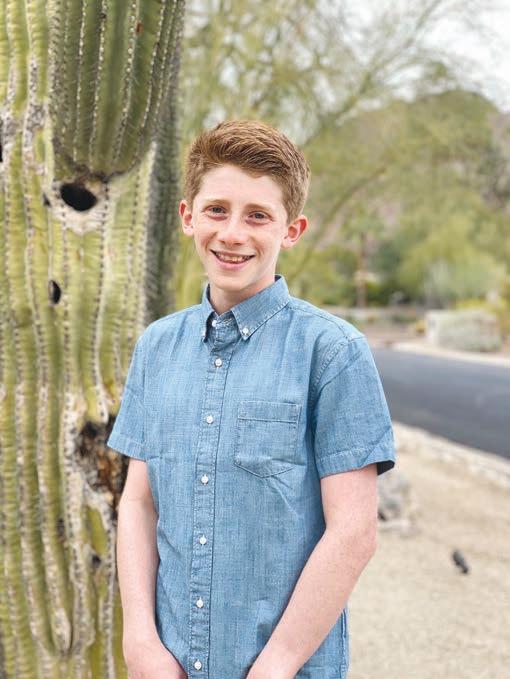
A student at Ingleside Middle School, Adlai enjoys skiing, playing baseball and the guitar, summer camp, the outdoors and environmental activism.
Michael was predeceased by his parents Esther and Harry Shcolnik, his brother David Shcolnik (Bonnie) and sister Marlene Hunt (Doug). He leaves behind the love of his life, Noreen Shcolnik; their children Kelly Shcolnik Pile (Rusty) and Brian Shcolnik (Andrea); and his beloved grandchildren, Rachel Pile and Danny Pile. He also leaves his remaining siblings, Bob Shcolnik (Linda z’l), Linda Ratcliffe (Bob z’l) and Janet Rees (Tom); and many adored nieces, nephews, great-nieces and great-nephews.
Michael passed peacefully on March 9, 2021. Interment was at Mt. Sinai Cemetery with Rabbi Bonnie Koppell officiating. The family humbly requests donations be made to: The Arizona Chapter of the Crohn’s and Colitis Foundation, www.crohscolitisfoundation.org/chapters/southwest
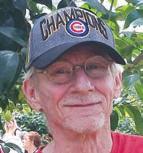


Matthew Weston Rush becomes a bar mitzvah on May 1, 2021, at Congregation Beth Israel. He is the son of Rhonda and Jason Rush of Phoenix.
Grandparents are Nancy Stein of Scottsdale and the late Myron Stein; and Judy and Alan Rush of Scottsdale.
For his mitzvah project, Matthew is volunteering with Miracle League, Graffiti Busters, Feed Our Babies, Ben’s Bells, Nourish PHX, Home Base Youth Services and Project C.U.R.E.
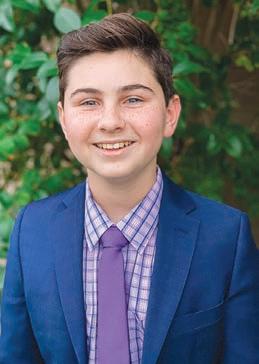
A student at Ingleside Middle School, Matthew enjoys sports, video gaming, art and cooking. JN
Rochelle Maloree Battock passed away at the age of 85 on March 13, 2021, surrounded by family at home in Phoenix. Rochelle was born and raised in Chicago, Illinois. She met her husband Irwin on the first day of freshman year at Marshall High School. They celebrated their 66th wedding anniversary two weeks before she passed. The family moved to Phoenix in December 1969. Over the years, Rochelle and Irwin lived in Jacksonville, Florida and Fort Lee, New Jersey until they made their way back to Phoenix in 1995. She was a longstanding member of Beth El Congregation for 50 years and actively participated with Sisterhood and Hadassah. Rochelle, fondly known as Ro, Razel, Auntie and Bubbe, was the matriarch of the family. Bubbe’s house was the gathering place for celebrating family traditions and what she will be most remembered for.
She is survived by her husband Irwin; her children, Esther and Martin; her grandchildren, Joseph (Kathryn), Sarah (Howard), Allison (Ryan), Jonathon (Taliah); her great-grandchildren, Brooks, Cailyn, Jonah, Micah and Arya.
Contributions in her honor and memory can be sent to Beth El Congregation, 1118 West Glendale Ave, Phoenix, AZ, 85021. 602-944-3359 or www.bethelphoenix.com
Roslyn Blumenthal passed away unexpectedly on Wednesday, Feb. 24, 2021. She was 72.


She was born in 1948 in Phoenix to Sam and Frieda Abrams. She graduated from Central High School in 1966. She attended Phoenix College and went on to become a medical transcriptionist for over 30 years. She was dedicated and hardworking, always putting careful thought into her work. She retired at the age of 62.
She loved retirement and her grandkids. In her final days, she enjoyed a good game of Connect Four with her grandson. She was an old soul and will be remembered by her friends and family for her kindness, love and compassion.
Roslyn is survived by her brother, Richard (Cheryl); her son, Ron (Tina); her daughters, Julie (Jay) and Shari (Chris); eight grandchildren, Kelli, Jordan, Joel, Lilly, Abby, Grace, Adler; and great-granddaughter, Pearl.
Graveside services were held at Beth Israel Memorial Cemetery where she is laid to rest near her parents. Donations may be made in Roslyn’s memory to the Alzheimer’s Association.
SHARE YOUR ENGAGEMENT, WEDDING, BIRTH, BAR/BAT-MITZVAH ANNOUNCEMENT AND ANY OTHER SIMCHA ON BOTH JEWISHAZ.COM AND THE WEEKLY JEWISH NEWS ... FOR FREE . JEWISHAZ.COM
JEWISHAZ.COM JEWISH NEWS MARCH 26, 2021 27
PHOTO COURTESY OF RUSH FAMILY
PHOTO COURTESY OF LIPTON FAMILY
40-CLASS SERIES: The 40 Greatest Debates in Jewish History!

Rabbi Dr. Shmuly Yanklowitz
Apr. 6, ‘21 - Jan. 11, ‘22 @ 10:00 am PT
Cultivating Trust: Exploring the Writings of Etty Hillesum
Rabbi Dorothy Richman
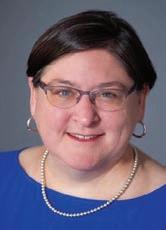
Monday, Apr. 19 @ 1:00 pm PT
3-CLASS SERIES: Jewish Views on the Afterlife: A Three-Part Series – Class 1

Rabbi Dr. Shmuly Yanklowitz

Thursday, May 6, 13, 20 @ 10:00 am PT
The Old Man Kohelet: His Life On Review
Rabbi Dr. Kerry Olitzky
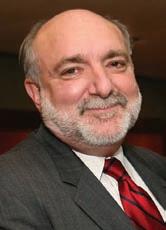
Monday, June 14 @ 1:00 pm PT
The Making of a Torah Scroll: Exploring Jewish Scribal Arts
Julie Seltzer
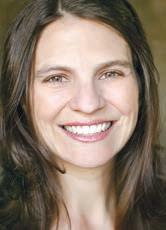
Wednesday, Apr. 7 @ 1:00 pm PT
Skepticism 101: How to Think Like a Scientist
This program is part of the “Scientists in Synagogues” initiative.

Dr. Michael Shermer

Wednesday, Apr. 21 @ 1:00 pm PT
PANEL DISCUSSION: A Communal Tribute to Rabbi Mari Chernow To Celebrate 18 Years of Service to our Community!
Keynote Speaker: Rabbi Dr. David Ellenson
Tuesday, May 11 @ 1:00 pm PT
Praying for the Monsoon: An Arizona Liturgical Adventure
Dr. Daniel Stein Kokin
Thursday, June 17 @ 1:00 pm PT
Just Judaism: Understanding the Centrality of Social Justice


Rabbi Rick Jacobs

Monday, July 12 @ 1:00 pm PT
The Jews’ Indian: Colonialism, Pluralism and Belonging in America
Dr. David Ko man
Tuesday, July 20 @ 1:00 pm PT
10-CLASS SERIES: Building Yourself One Trait at a Time! A
Mussar
Rabbi Loren Berman
April 8 - June 10 @ 1:00 pm PT
Social Neuroscience Perspectives on Empathy and Compassion
Professor Alfred Kaszniak
Monday, Apr. 26 @ 1:00 pm PT
Fifteen Profound Teachings from The Thirteen Petalled Rose by Rabbi Adin Steinsaltz

Rabbi Arthur Kurzweil
Tuesday, June 1 @ 1:00 pm PT
The Four Books That Changed Jewish History

Jonnie Schnytzer
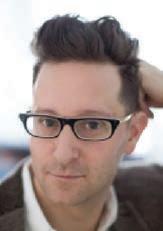
Tuesday, June 22 @ 1:00 pm PT
A Sacred Dialogue: The Conversation Between Liturgy and Poetry

Rabbi Hara Person
Monday, July 26 @ 1:00 pm PT
How Jewish Wisdom Can Inspire a Paradigm Shift with Renewed Leadership
Rabbi Yehuda Sarna
Monday, Apr. 12 @ 1:00 pm PT
PANEL DISCUSSION: The Most Urgent Agenda for the American Jewish Community!


Professor Stan Mirvis
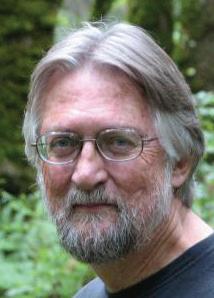
Rabbi Herschel Aberson
Rabbi Nitzan Stein Kokin
Wednesday, May 5 @ 1:00 pm PT
What Does God Do All Day Long? Rabbinic Reflections on the Divine Daily Schedule
Dr. Sarit Kattan Gribetz
Monday, June 7 @ 1:00 pm PT
The Religious and Human Urgency of Right Speech in a Post-Truth Age
Rabbi Jason Rubenstein
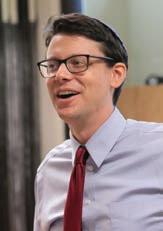



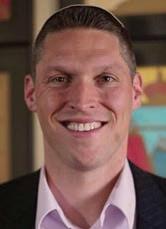




Wednesday, July 7 @ 1:00 pm PT
HAMMERMAN FAMILY LECTURE: Faith and Justice: Where Our Greatest Aspirations Meet Our Core Commitments
Rabbi Sharon Brous
Wednesday, Aug. 11 @ 1:00 pm PT
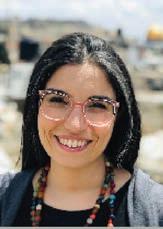
28 MARCH 26, 2021 JEWISH NEWS JEWISHAZ.COM
with Valley Beit Midrash All Season Long
events on Zoom, just $18 per event! Season Pass Holders enjoy unlimited attendance for $54 a month Learn More at www.ValleyBeitMidrash.org
Learn
All
10-part Spiritual Journey Into
Ruach Hamidbar

































 NICOLE RAZ | STAFF WRITER
NICOLE RAZ | STAFF WRITER



























 JENNIFER BAUM | CONTRIBUTING WRITER
JENNIFER BAUM | CONTRIBUTING WRITER





















 NICOLE RAZ | STAFF WRITER
NICOLE RAZ | STAFF WRITER





 ERIN BEN-MOCHE | JNS.ORG
ERIN BEN-MOCHE | JNS.ORG





 LINDA ENGER
LINDA ENGER






 SHANNON LEVITT | MANAGING EDITOR AND ADAM REINHERZ | CONTRIBUTING WRITER
SHANNON LEVITT | MANAGING EDITOR AND ADAM REINHERZ | CONTRIBUTING WRITER
























































































